Copy this text to your clipboard and paste into your CMS

The Tourism Recovery in South East Asia: Twelve Months On
Endemic is not a word you tend to hear today. Rewind twelve months, and it was hard to avoid throughout South East Asia. Politicians talked frequently about “a transition to endemic.” With target vaccination rates achieved, Omicron infection curves falling and economies under pressure, governments prepared their citizens to “live with Covid.” This was a prerequisite to restore international mobility after two years of airtight restrictions on travel.
One year ago, on 1 April 2022, the borders fully reopened in Singapore, Malaysia, Indonesia and the Philippines as quarantine mandates were removed. Cambodia and Vietnam had recently reopened. Thailand, although open for tourism since November 2021, still required a lengthy online visa application, a Covid test on arrival and a one-night stay in an assigned hotel until a clear test result was confirmed. Laos would reopen in early May.

Malaysia was one of the first Southeast Asian countries to reopen to tourists. Photo by Esmonde Yong on Unsplash
It marked an important milestone for a region that had battled to resurrect travel activity via risk-averse travel bubbles, vaccinated travel lanes and sandboxes. Residual restrictions remained in place, such as pre-departure tests, masking and showing a vaccine certificate, but these would soon be phased out. While South East Asia unlocked its airport gates, North East Asia remained shut. Japan, Hong Kong and Taiwan wouldn’t drop their travel restrictions until October, and China would wait until 8 January 2023 to reopen.
One year after South East Asian flyers took to the skies once more, the anniversary passed unnoticed. Travellers tend to look forward. The travel industry’s eye are focused further in the past. Restoring visitor arrivals parity with pre-pandemic 2019 is the primary objective.
A more worrying development also explains the muted celebrations. Dry season has arrived in mainland South East Asia. With it comes farmland and plantation burning on a huge scale to facilitate agricultural renewal. The unwanted outcome is acrid smoky air hanging over the region. On Saturday 1 April, parts of Thailand, Cambodia, Laos, Myanmar and Vietnam experienced air quality deemed unhealthy. Although the rainy season continues in Malaysia and Indonesia, a smoky drift from the north can be seen and smelt in the mornings in Kuala Lumpur. Once dry season commences, daily life in both countries and Singapore is likely to be impacted by the “transboundary haze” – perhaps for several weeks or even months.
Toxic smoke clouds are causing concern for the tourism industry just as it starts to recover. Last weekend, authorities in Chiang Mai, a popular tourism destination in Thailand, handed out face masks to locals to protect them from breathing airborne particulates. April is a vibrant month for cultural celebrations that attract tourists. After three years of Covid gloom, hopes were high for tourist-friendly Songkran reveries in Thailand, Khmer New Year in Cambodia and Eid al-Fitr festivities across the region. If the burning continues, it could spark booking cancellations for China’s five-day May Golden Week, starting on 29 April, which South East Asian nations are hoping will kick-start the return of Chinese tourists in larger numbers.
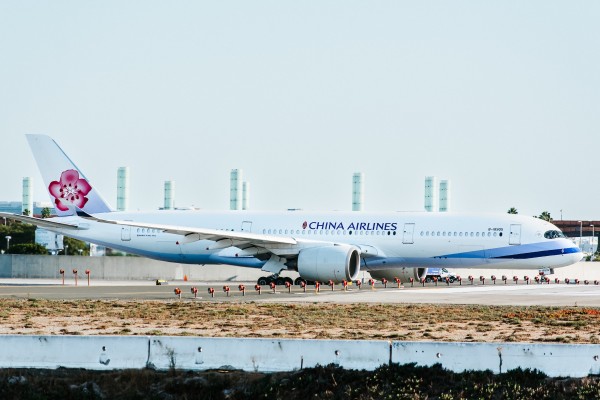
China is a key source of tourists for many Southeast Asian countries. Photo by Lukas Souza on Unsplash
Air quality issues are clouding a buoyant first quarter for travel and tourism in the region. After a slow start last April, air passenger numbers and visitor arrivals increased notably in the final months of 2022, and 2023 began positively. Airlines are restoring flight routes and frequencies, and airport are busier and customs lines noticeably longer. The travel buzz is definitely back although tourist volumes remain well below the record 2019 levels.
Airline seat capacity in South East Asia in March was 20 percent lower than the same month in 2019. Domestic air capacity is recovering fastest, down just 13 percent from March 2019, while international air capacity remained 31 percent lower, according to OAG. The scaling up of outbound travel activity from China, which began its vastly expanded summer schedules for airlines at the weekend, will bolster South East Asia’s airport traffic over the coming months.
Competition among destinations to attract tourists is being fiercely fought. Increasing travel activity in 2023 from Asia Pacific countries is helping. In 2019, China was the top visitor market for the 10 countries of South East Asia, contributing 22.5 percent of all visitors. South Korea ranked 4 th , Japan 7 th , Australia 11 th , Taiwan 15 th and Hong Kong 23 rd . Four of South East Asia’s top 10 visitor markets were located within the region itself, Singapore (2 nd ), Malaysia (3 rd ), Thailand (5 th ) and Indonesia (6 th ). All countries are now watching each other’s travel promotions assiduously and marketing hard to entice each country’s tourists.
Thailand, which is South East Asia’s most visited country, leads the way. In the first quarter of 2023, it welcomed 6.15 million visitors, more than half the 11.15 million that visited across the 2022 calendar year. The Tourism Council of Thailand forecasts 30 million visitors this year, which would represent a 75 percent recovery from 39.9 million in 2019. Vietnam greeted 2.7 million visitors from January to March this year, compared to 3.6 million in all of 2022. In the first two months of 2023, Singapore’s Changi International Airport handled more than one quarter of total passengers in 2022.
All of this is happening against a backdrop of high airfares, a situation unlikely to improve anytime soon. “I see airfares going higher and higher,” Shukor Yusof, CEO of Malaysia-based Endau Analytics, told The South East Asia Travel Show in March. “Airline capacities have not yet risen back to pre-pandemic levels to cater for the number of people travelling at the moment, and some carriers are not back to 100 percent in terms of putting planes back into their fleets.”

As tourism continues to grow across Southeast Asia after the pandemic, the high cost of travel is having an impact.
It's not all about air travel in 2023, though. South East Asian nations will invest heavily to expand rail infrastructure over the next decade, but two projects developed before the pandemic offer exciting travel possibilities. The China-Laos railway, which connects the Chinese city of Kunming and the Lao capital Vientiane is scheduled to commence cross-border trips later this month. The railway opened in December 2021, but offered journeys only within the stunning landscapes of Laos while China’s borders were closed.
Also highly anticipated is South East Asia’s first high-speed railway, slated to launch in July. Part-financed and built by Chinese rail technology and contracting firms, the 142km line connects Indonesia’s capital Jakarta and its third-largest city Bandung. Manufactured in the Chinese city of Qingdao, the high-speed trains will travel at up to 350kpm, can withstand earthquakes and feature a livery inspired by Indonesian Komodo dragons. The launch will create a great deal of tourism interest and, most likely, clarification about plans to extend the high-speed railway from Jakarta to Surabaya. “This will be a ground-breaking moment in the history of rail travel in South East Asia,” says James Clark, Editor of the Future South East Asia newsletter.
- Asia Media Centre
Other relevant stories
Subscribe to Asia Digest
Southeast Asia's tourism industry begins uneven recovery
Keep up with the latest medical breakthroughs and healthcare trends with the Reuters Health Rounds newsletter. Sign up here.
Reporting by Chen Lin and Gavin Maguire in Singapore, Jamie Freed in Sydney, Chayut Setboonsarng, Kay Johnson and Orathai Sriring in Bangkok, Neil Jerome Morales in Manila, Chan Thul Prak in Phnom Phenh, Khanh Vu in Hanoi, and Liz Lee in Kuala Lumpur; Writing by Jamie Freed and Sayantani Ghosh; Editing by Kim Coghill
Our Standards: The Thomson Reuters Trust Principles. , opens new tab
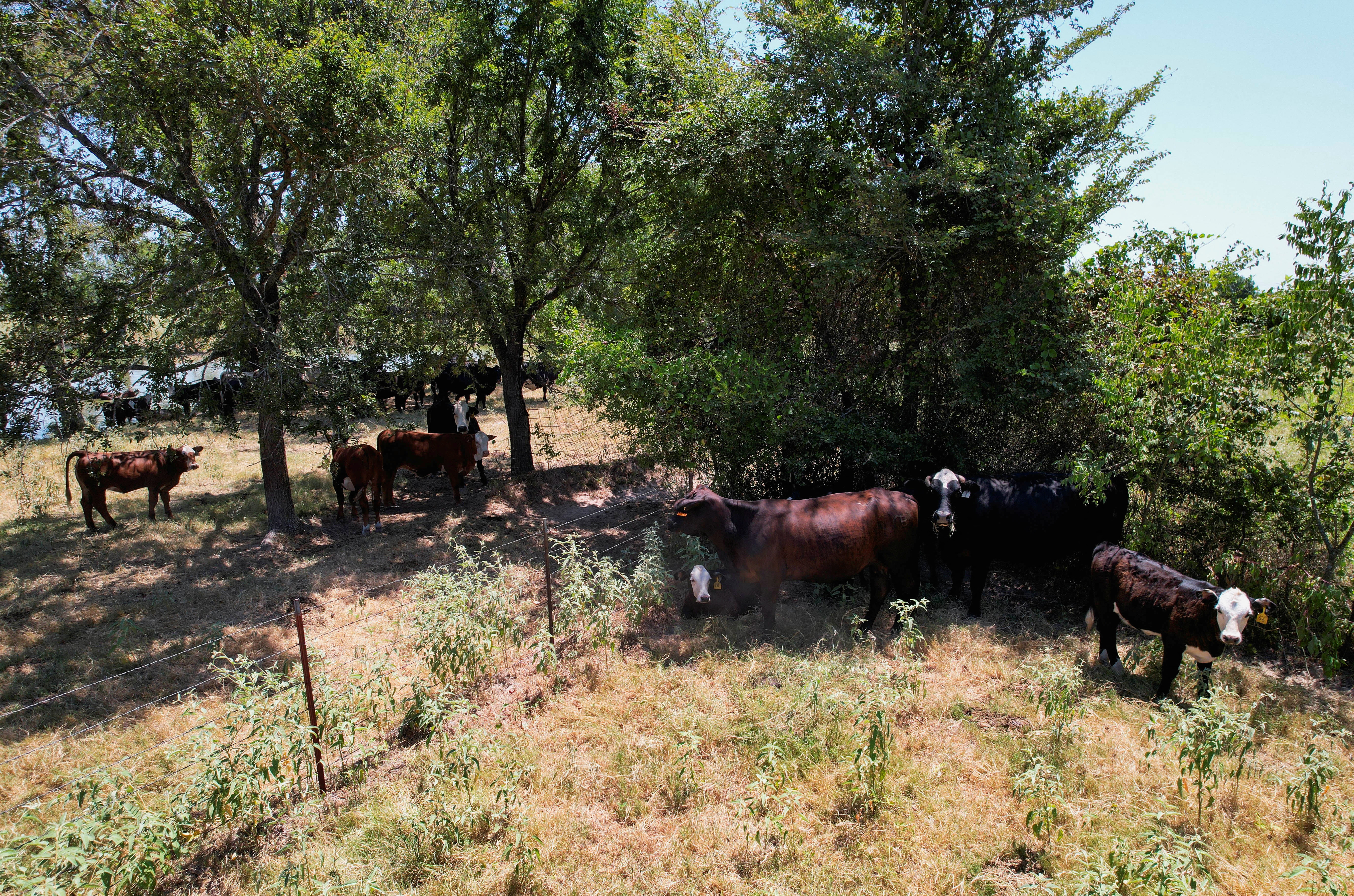
Futures recover from Wall St selloff ahead of payrolls test
U.S. stock index futures rose on Friday, a day after equities slumped on hawkish remarks from Federal Reserve officials on interest rate cuts, while investors braced for a key jobs report that could help shape the monetary policy outlook.
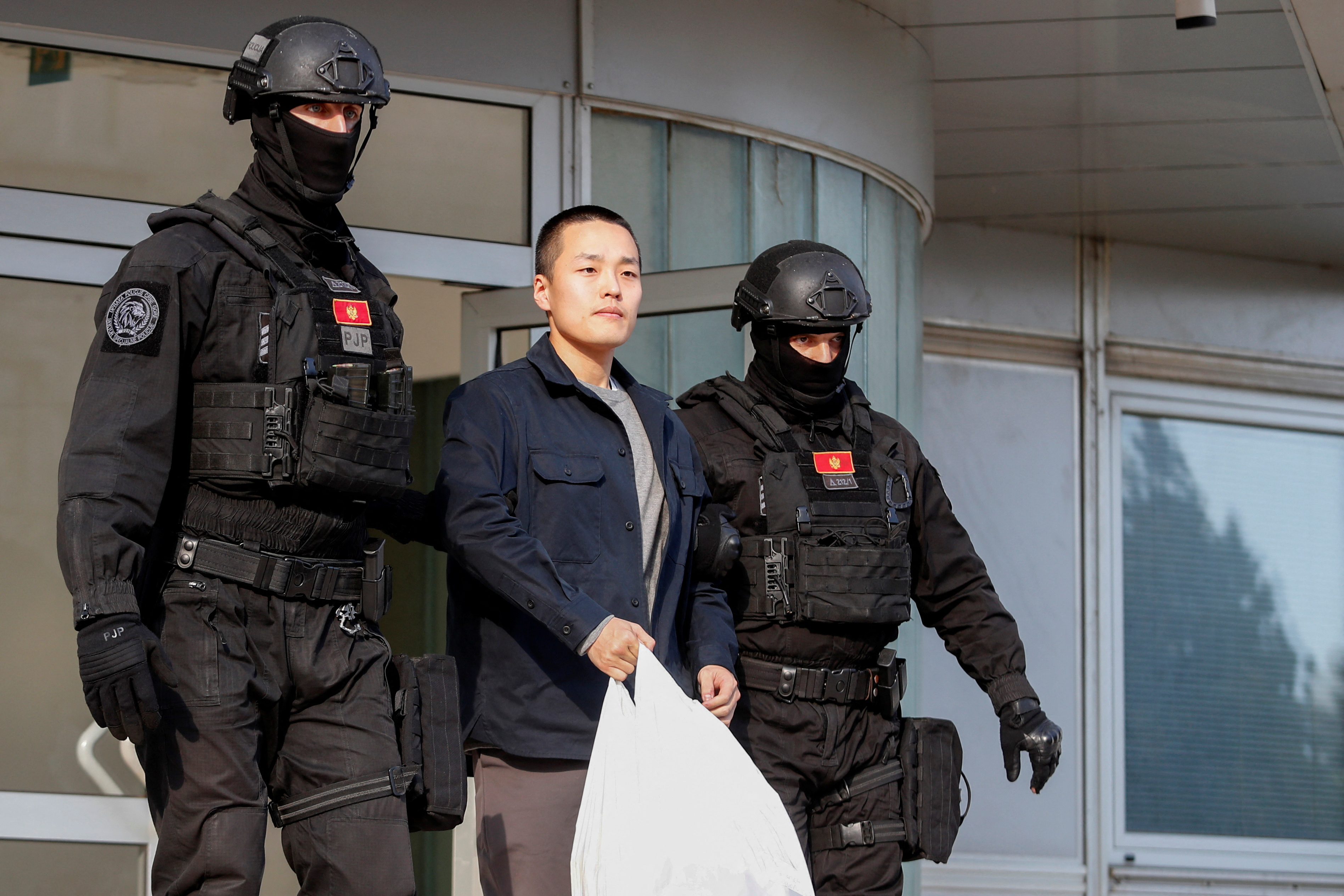

The New Equation
Loading Results
No Match Found
Revitalising tourism in Southeast Asia
Meeting the challenges posed by COVID-19 in the tourism sector
Challenges faced by the tourism sector
Asia has experienced rapid growth in tourism primarily by sustained economic growth, regional cooperation and liberalised air travel prior to COVID-19. With international and domestic travel heavily restricted as a result of COVID-19, Asia Pacific is projected to be one of the most heavily hit regions in terms of tourism, facing potential losses of USD4.5 billion .
Some signs of positive recovery are showing. As vaccines are being rolled out across the globe and countries form bilateral travel bubbles, people are starting to travel domestically and internationally. But these are temporary measures amidst the uncertain evolution of the pandemic. The longer term challenges facing tourism still remain. As countries gradually restart to open their doors for international travel, some of the challenges that need to be addressed are:
- transparent communication, as destinations will have to keep innovating and collaborating locally and globally
- regular updates on health and safety protocols in alignment with local health authorities, governments, and institutions for international travel
- understanding behavioural changes and better comprehension of how people traveling perceive risks.
Watch our webcast as panel of experts discuss how Southeast Asian countries can meet the COVID-19 challenges while finding opportunities for growth
- Jessica Shannon, Global Government & Public Sector Lead, PwC Ghana
- Pieter van de Mheen, Consulting leader, PwC Indonesia
- Steven Schipani, Principal Tourism Specialist (South East Asia), ADB
- Liz Ortiguera, CEO, Pacific Asia Travel Association
Click here to watch
Identifying opportunities for growth
While this is a major crisis, there are opportunities to reconfigure and reposition the tourism sector for sustainable growth and differentiation, including areas such as:
- Source market diversification (including a focus on domestic and regional tourism)
- Rebranding and marketing to new customer segments
- Linkages within domestic markets to build growth in other sectors
- Sustainable and eco-tourism
To revitalise tourism in SEA, governments will need to develop flexible policies to balance public health and economic needs in phases. Travellers' confidence will recover as safety and hygiene protocols are set throughout the whole tourism value chain to reduce risks. Technology will also play a key role in restarting tourism by providing updated protocols and responsibilities through digital and social media. As we tackle the fundamental challenges of reopening the tourism sector safely to protect national populations, we can look forward to revitalised tourism in SEA.
Recovery across tourism subsectors require differentiated approaches based on COVID-19 impact
- Hospitality (accommodation, F&B)
- Leisure (cruises, amusement parks)
- Meetings, incentives, conferencing, exhibitions
- Culture, heritage and religious travel (museums, monuments, pilgrimages)
- Wellness and eco-tourism
- Ground transportation and mass transit
Considerations to reopen subsectors
- Crowd exposure and density
- Typical activity duration
- Infrastructure constraints and high-touchpoint areas
- Average age of tourist
- Screening protocols
- Ability to utilise personal protective equipment
With deep knowledge of the Southeast Asian markets, governments and cultures and experience in global tourism and source markets, our team can help you to identify and address the unique challenges you face.
Our differentiator: industry-specific knowledge
Our clients work closely with us across each industry segment throughout their COVID-19 recovery efforts. You can expect us to provide a clear understanding of the unprecedented challenge and the urgent stabilisation requirements, as well as of longer-term strategies to support the industry whilst preserving public health needs. Gain insights on the unique opportunities for tourism destinations such as leveraging the potential of eco tourism and greater domestic tourism in SEA to emerge stronger.
PwC's Hospitality and Leisure practice provides strategic insights and expertise across all areas of the sector, including travel and tourism, gaming, lodging, marinas, sports facilities and teams, vacation ownership, franchise and management selection, lease structuring, lodging asset, valuation and appraisal. With our professionals located in all continents, you can gain insights into local and global knowledge and expertise.
Global footprint
With firms in over 155 countries and more than 284,000 people, our clients can look beyond traditional boundaries and embrace new horizons to achieve long-term sustainable impact.
PwC has supported the COVID-19 recovery work in the global tourism sector including:
- United States
How we can support you
Strategy and planning.
- Long-term national strategy
- Policy options and incentives evaluation
- Market segmentation, diversification and strategy
- Covid-19 health and safety protocols
- Public-private partnership models for recovery
- Consensus building
Market studies
- Feasibility studies for new tourism products
- Impact assessments for tourism subsectors
- Source market assessments and attractiveness surveys
- Revenue modelling and analytics
- Benchmarking against other tourism markets
- Communications advice for recovery campaigns
Transformation
- Pilots and proof of concepts for reopening
- Vaccination passport concepts
- Recovery phasing of tourism avenues and assets
- Digitisation for crowd and health management
- Change management
- Workforce planning and reskilling
Strategic project management and support for capital financing
Download the publication
{{filterContent.facetedTitle}}
{{item.publishDate}}
{{item.title}}
{{item.text}}

Tristan Hockley
Asia Pacific Government and Public Sector (G&PS) Leader and Salesforce Practice Leader, South East Asia Consulting, PwC Singapore
Tel: +65 9753 6736

Jessica Shannon
Global Government and Public Sector Leader, PwC Ghana
Tel: +233 (0) 30 276 1500

Pieter van de Mheen
Consulting Partner, PwC Indonesia
Tel: +62 21 509 92901

Edwina Chin
International Development Leader, South East Asia Consulting, PwC Singapore
Tel: +65 9750 3775

© 2015 - 2024 PwC. All rights reserved. PwC refers to the PwC network and/or one or more of its member firms, each of which is a separate legal entity. Please see www.pwc.com/structure for further details.
- Privacy statement
- Legal disclaimer
- Cookies information
- About site provider
- Terms and conditions
The Straits Times
- International
- Print Edition
- news with benefits
- SPH Rewards
- STClassifieds
- Berita Harian
- Hardwarezone
- Shin Min Daily News
- SRX Property
- Tamil Murasu
- The Business Times
- The New Paper
- Lianhe Zaobao
- Advertise with us
South-east Asia's tourism industry begins uneven recovery
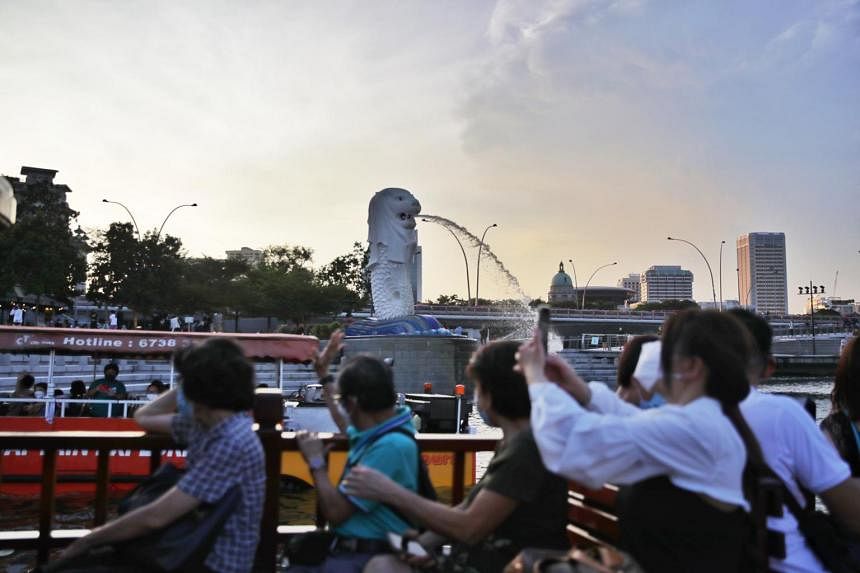
MANILA (REUTERS) - Two years after tourism in South-east Asia ground to a halt, travellers are getting back on planes as entry and Covid-19 quarantine rules are lifted in the region, but a full recovery will be slow and some long-time hotspots are falling out of favour.
International airline bookings to South-east Asia reached 38 per cent of pre-pandemic levels by late March, according to travel firm ForwardKeys. They were at less than 10 per cent of 2019 levels at the start of the year.
Singapore and the Philippines led a sharp uptick in bookings.
"We are the first to cut all the red tape," said Philippines tourism minister Bernadette Romulo-Puyat. "Tourists are quite happy because upon arrival, they are free to go."
These countries now require vaccinated travellers to only perform a rapid antigen test before arrival, whereas more complicated requirements in Thailand have knocked the former tourist favourite out of the top league.
The ForwardKeys data showed Singapore and Philippines bookings were at 72 per cent and 65 per cent of 2019 levels, respectively, while Thailand was at just 24 per cent.
"The on-arrivals PCR can cost 2,000-2,500 baht (S$81-S$101) and can cost a lot especially for groups, (making) people hesitant to travel," said Ms Marisa Sukosol Nunbhakdi, president of the Thai Hotels Association.
"If another country does not have entry requirements, people would rather go there… less hassle."
Bookings are a forward-looking indicator, and arrival figures also include returning locals.
Singapore and the Philippines have large outbound markets compared to Thailand, said Mr Brendan Sobie, an independent aviation analyst.
Asia, though, is lagging a recovery in other regions including Europe, which eased restrictions months ago.
Domestic and international traffic within the Asia Pacific this year will only reach 68 per cent of 2019 levels and hit pre-pandemic traffic by 2025, a year behind the rest of the world, the International Air Transport Association said.
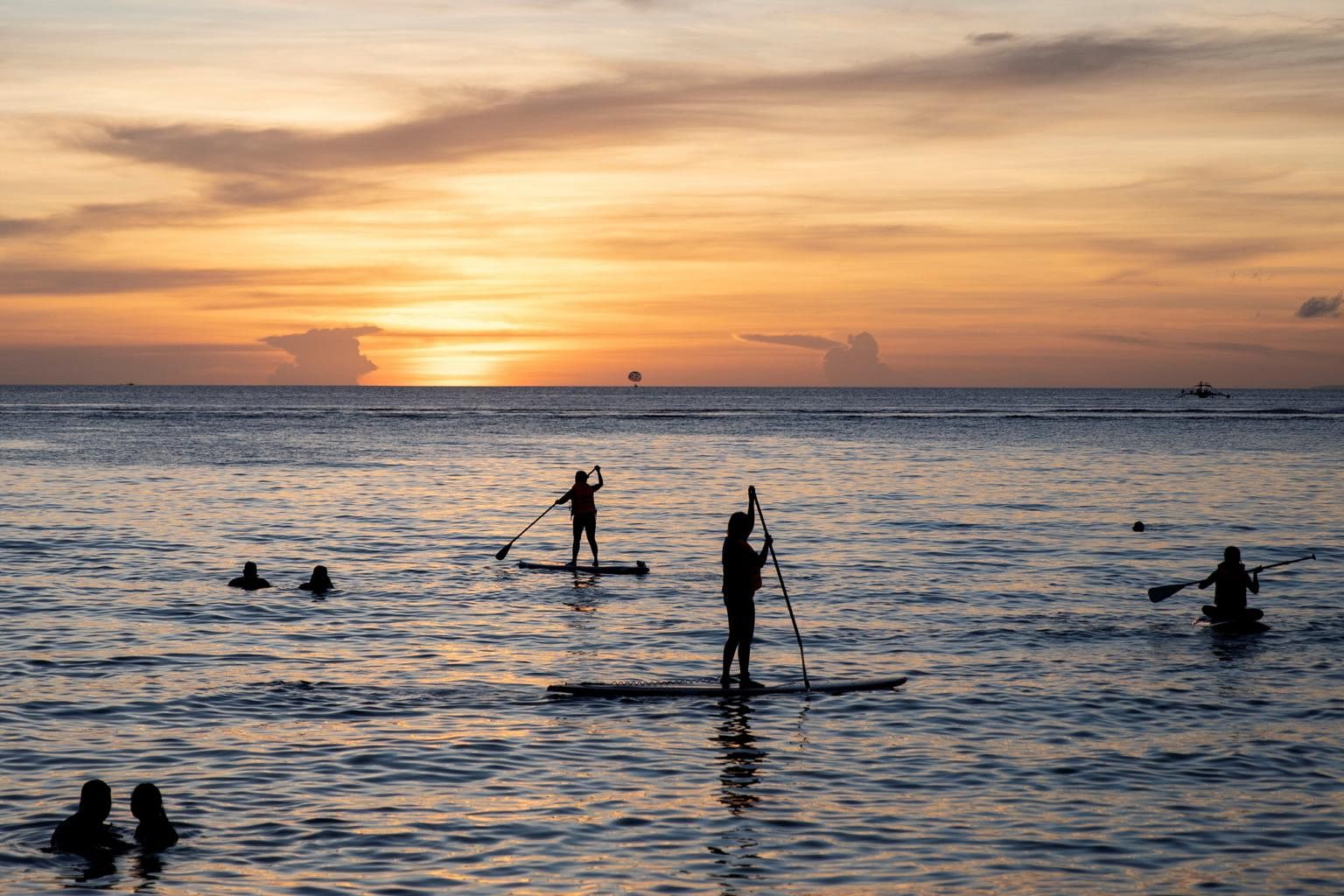
For example, visitors to Singapore surged nearly four times in February from a year earlier, when the city-state had restricted entry.
But that was just 9 per cent of arrivals in February 2020 and included an influx of holders of work visas from Malaysia and India.
Thailand will take until 2026 to make a full recovery, the governor of its central bank said on Monday. In 2019, tourism accounted about 12 per cent of the country's gross domestic product (GDP).
Travel and tourism in South-east Asia - known for its white sand beaches, historical architecture and warm climate - contributed US$380.6 billion (S$519 billion) to the region's GDP in 2019, or 11.8 per cent of the total, according to World Travel & Tourism Council.
No Chinese tourists
The profile of international travellers to South-east Asia also has shifted. Once making up Asia's largest group of travellers, Chinese tourists are stuck at home due to strict lockdowns.
More than a quarter of the 40 million tourists who had visited Thailand in 2019 were Chinese. This year, the country expects between 5 million and 10 million international arrivals from places like Malaysia and other South-east Asian neighbours.
Japan, which remains shut to tourists itself, has seen only small numbers of travellers to South-east Asia, while Russia's invasion of Ukraine has kept away the typically large number of Russian tourists in the region.
A third of the travellers to Southeast Asia so far this year were from Europe, up from 22 per cent in 2019, while those from North America have more than doubled to 21 per cent from 9 per cent in 2019, according to ForwardKeys. Travellers from Asia made up just 24 per cent so far this year, versus 57 per cent in 2019.
Popular Europe
"Things changed a lot for the better over the last month. We are seeing a boom in bookings," said Mr Rabil Lian, a tour guide with a top Singaporean travel agency, who recently got his job back after filling a temporary government job through the pandemic.
Mr Lian, 51, led five tour groups to Europe in the past four months, and said Australia was becoming a popular destination as well. But he said many were waiting for Japan and Taiwan to ease rules.
In Vietnam, foreign tourists nearly doubled in the first quarter this year from a year earlier. But the country, which lifted nearly all curbs only last month, expects just over a quarter of the international arrivals it saw in 2019.
"I saw all the famous food stores were still there as they have domestic demand and didn't feel like there was a huge gap left by (the lack of) tourism over the last two years," said Mr Justin Ong, a Singaporean journalist who visited Vietnam last month, his first trip since the pandemic hit.
Join ST's Telegram channel and get the latest breaking news delivered to you.
Read 3 articles and stand to win rewards
Spin the wheel now
Asia Regional Integration Center

- Cross-border Infrastructure
- Trade and Investment
- Money and Finance
- Regional Public Goods
- AEIR Data Catalogue
- International Investment Agreements
- Economic and Financial Indicators
- Financial Stress Index
- Asia-Pacific Regional Cooperation and Integration Index
- Integration Indicators database
- Daily Market Watch
- Publications
- Infographics
- Integration Dashboard
- Economic Calendar
- RCI-POD Webinar
- Spotlight archives
- Kyrgyz Republic
- Turkmenistan
- China, People’s Republic of
- Hong Kong, China
- Korea, Republic of
- Taipei,China
- New Zealand
- Afghanistan
- Brunei Darussalam
- Lao People’s Democratic Republic
- Philippines
- Timor-Leste
- Cook Islands
- Fiji Islands
- Marshall Islands
- Micronesia, Federated States of
- Papua New Guinea
- Solomon Islands
- Four Ways to Accelerate Tourism Recovery...
Four Ways to Accelerate Tourism Recovery in Asia

Countries in Asia and the Pacific need to work together to bring in more visitors from within and outside the region by adopting bilateral and regional agreements, and offering improved infrastructure and better skills.
International tourism is recovering fueled by pent-up demand, but the pace of recovery varies across regions due to differences in how countries built confidence among travelers during and in the aftermath of the pandemic.
Asia and the Pacific lags in tourism recovery compared to Europe and the Americas because of its cautious stance on reopening borders and more restrictive travel policies. The flow of tourists into the region was only about 10.3% of the pre-pandemic figure of 343 million in 2019, despite bullish year-on-year growth during the first 8 months of 2022.
In comparison, Europe and the Middle East have achieved at least 50% of its pre-pandemic arrival traffic. The pace of recovery also varied across Asia, with around 33% for both Central and South Asia, 12% for Southeast Asia, and 28% for the Pacific. This is likely to change in 2023 as more destinations reopen, particularly in the People’s Republic of China, a major driver of outbound tourism, which opened its international borders for tourist activities in January 2023.
The full recovery of international tourism before 2024 remains uncertain, with 61% of the UN World Tourism Organization experts surveyed believing it will occur later, according to the Asian Economic Integration Report (AEIR) 2023.
Risks to recovery include a global economic slowdown, inflation, and geopolitical pressures. The Russian invasion of Ukraine does impact arrivals into Asia, as Russian travelers accounted for one-third of tourist arrivals into the region prior to COVID-19. Soaring jet fuel prices in Asia are dragging on recovery, reducing flights and increasing airfares. Higher inflation is also limiting travel for tourism.
The brisk recovery of tourism rests on countries’ ability to make it easier to enter and leave countries, which entails stronger global and regional cooperation. To do this, the following policies are needed:
- Tourism-dependent economies must strengthen cooperation with countries outside the region. To counter the damage during COVID-19, caused by heavy reliance of Asian economies on East Asian members as their predominant source market, countries should build partnerships with new source markets such as the United States, the United Kingdom, and Europe, by working on common tourism standards. Southeast Asian countries, for example, are promoting their region as one tourist destination, while using international agreements to increase flights from outside the region.
- Cooperation between individual countries in Asia should be accelerated. The Philippines has recently renewed its tourism cooperation with Brunei Darussalam and Thailand, and is crafting a new tourism cooperation agreement with Malaysia to revive arrivals, which had declined by 10.2% between 2015 and 2019.
- Better transport across countries in the region must also be sought. For example, Central Asia’s nascent tourism sector stands to benefit from improved infrastructure being built across the region. Meanwhile, tourism arrivals to India, Bhutan, and Nepal are expected to benefit from the introduction of “regional travel circuits” that package multiple destinations using different types of transportation.
- Countries in the region need to address the tourism industry’s human capital challenges, including increasing youth and female employment, welcoming temporary migrant workers, enhancing skills, and establishing mutual recognition of tourism professionals. These measures, along with harnessing digital technology, will raise competitiveness, increase transparency, and open the sector up to help more people in host countries.
As the tourism recovery gains traction, countries in Asia and the Pacific must capitalize on the opportunities it brings. That includes learning from the pandemic and building a more resilient tourism sector for future crises.
Featured Publications
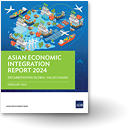
- aric_info[at]adb.org

Asia Travel Re:Set

Issue #100 - 2022: The Year That Tourism Returned to South East Asia
10 BIG questions for the region's travel transition from 2022 to 2023.

Welcome to issue 100 of Asia Travel Re:Set .
The 2022 travel conference season is wrapping up, and so is the newsletter. This is the final edition of the year – but I’ll be back fit and firing in mid-January.
This week began by presenting on stage at the UNWTO World Travel Conference: Tourism Futures Reimagined in Kota Kinabalu, Malaysia, and ended with a webinar recapping South East Asia’s travel comeback in 2022.
This is a period of reflection across the region.
Tourism is back, but (so far) on a much reduced scale than before. The cost of travel is up, currencies and consumer sentiment are volatile – BUT, thankfully, all the countries that reopened this year did not backtrack.
That may sound surprising to readers beyond the region – but the numerous Covid-era political oscillations and prevarications raised doubts at the turn of 2022.
And, so here we are - officially commencing the 4th year of Covid-19’s existence.
Yes, 2023 will be challenging.
It will be the most important year for Asia Pacific travel and tourism in modern memory. But progress over recent months has diluted, if not fully lifted, the gloom.
And that frames the “cautious optimism” often stated on conference stages this Fall.
Thanks for being onboard.
Share Asia Travel Re:Set
- “IN THE NEWS”
- 2022: the year that tourism returned to south east asia, - transitioning from 2022 to 2023: the state of south east asia’s travel recovery.
Reassessing the progress made in 2022, and forecasting what awaits up ahead in 2023 with Brett Henry, President of Indonesia-based MG Group.
“IN THE NEWS”
Enjoyed teaming up with Hannah Pearson and Brett Henry for a livestream on Friday to recap the 2022 travel year in South East Asia and assess the critical factors for 2023.
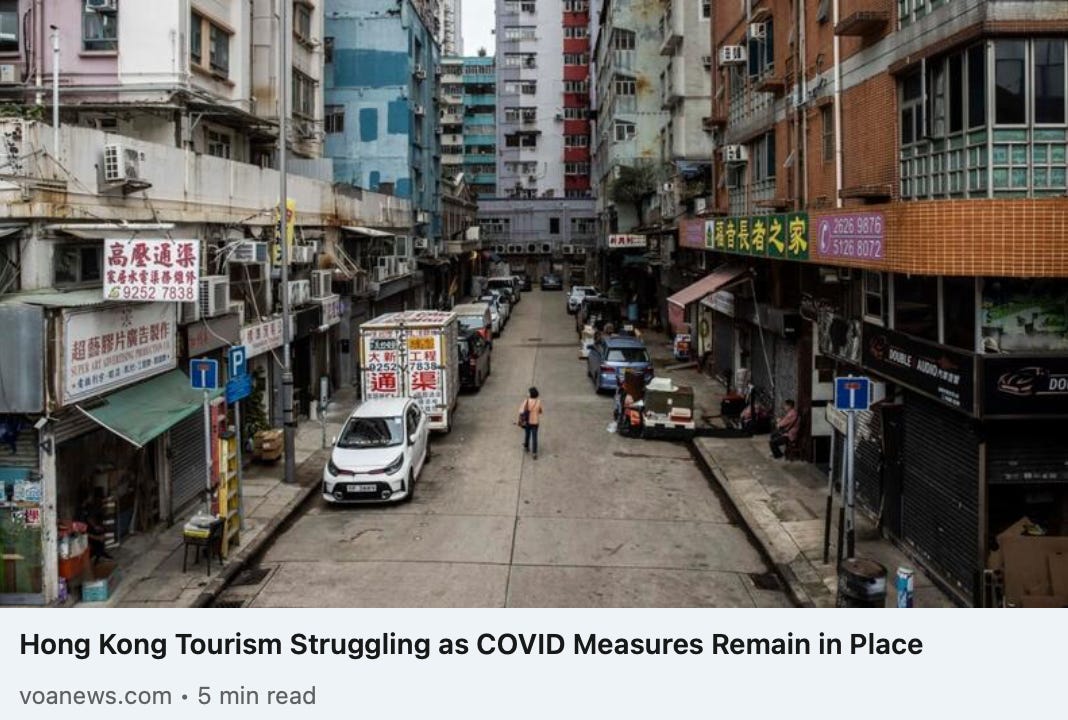
Thanks to Tommy Walker for including my comments in this thought-provoking article discussing the impact of a slow recovery on Hong Kong's tourism economy.

A pleasure working with the Phocuswright team once again to produce this comprehensive report analysing South East Asia’s in-motion travel recovery - and the drivers of an expected acceleration in travel and tourism activity over the next 3 years.
2022: The Year That Tourism Returned to South East Asia
“Gruelling. I can’t think of any other way to describe 2021. We enter the holiday season confronting similarly complex uncertainties as 12 months ago, after shards of light briefly flickered in November.”
That’s how I signed off issue 67 of Asia Travel Re:Set one year ago.
To recap a tortuous, virus-dominated year, I produced 21 Things That Will Forever Remind Us of Travel in Asia Pacific in 2021. It proved popular. Skift even republished it .

Re-reading it now, 2021 seems like an otherworldly era. One mired in politicised border reopening concepts that frustrated pretty much everyone.
We endured sandboxes, travel bubbles and vaccinated travel lanes. Somehow, we navigated low-, medium- and high-risk country categorisations.
And yet the region remained largely closed for the 2021 Christmas & New Year season.
And, let’s not forget, 2022 began like this…
What a difference 12 months make.
The 10 nations of South East Asia are fully open. So are South Korea, Japan and Taiwan. Hong Kong is sort of open. China is approaching a difficult winter period, but the number of international flights will increase in early 2023.
Three key challenges stand out in South East Asia: the continued absence of Chinese travellers, enduringly higher priced air tickets and still-to-recover flight frequencies.
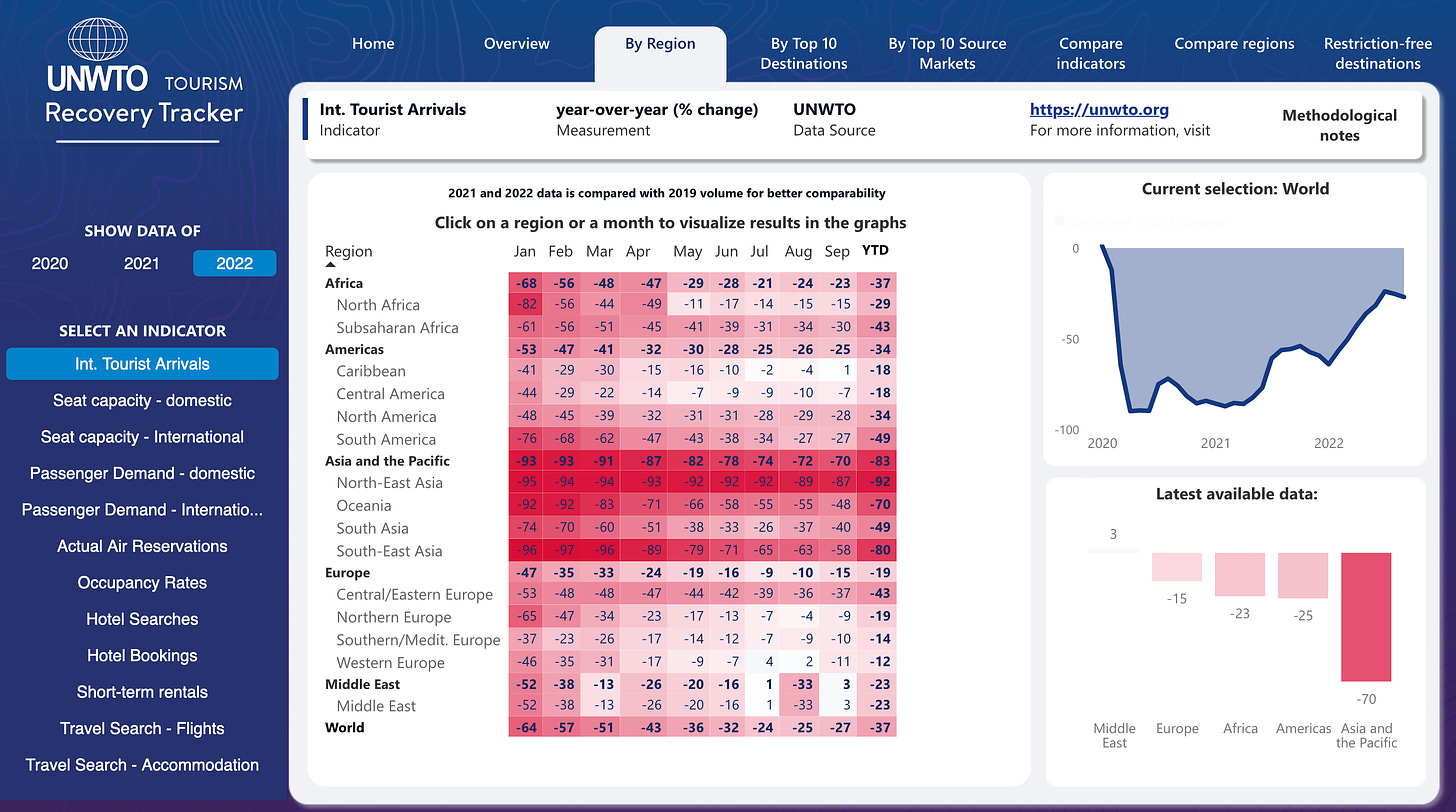
So how will (or won’t) 2023 be different?
To sign off for 2022, I’ve composed 10 open-ended questions. The answers to these global-local questions will define the overall direction of travel across the vast, dynamic and highly differentiated region that is South East Asia.
Will a negotiated settlement end Russia’s war in Ukraine, and - if so - how would this impact the global economic and regional travel outlooks?
2) Re-coupling
As the above UNWTO Recovery Tracker highlights, the Covid-era decoupling of South East Asian & North East Asian air markets has been disastrous. How quickly will two-way air traffic rebuild - and which markets will be the key beneficiaries?
How will shifting airline strategies and capacity building, jet fuel supply and demand, the US dollar value and a return of Chinese airlines to global skies influence air fares?
What are the realistic expectations for Chinese tourism in the region in 2023, given it accounted for 22.5% of visitors to South East Asia in 2019?
India’s shape-shifting outbound market and airline landscape were notable features of 2022. How will South East Asian destinations engage Indian travellers in 2023?
6) Competition
How will intense competition for travellers from destinations like Japan, South Korea and Australia impact the recovery across South East Asia?
Will the travel industry effectively start to move the dial on climate impact?
8) Domestic
Domestic tourism kept the industry afloat in South East Asia during the long shutdown. But where will domestic travel fit into destination planning next year?
With the region’s three largest countries, China, India and Indonesia, pushing ahead with Central Bank Digital Currencies (CBDCs), and cross-border agreements on QR code formats proliferating, how will (or won’t) this impact travel settlements?
And finally,
10) Long View
What would a successful 2023 actually look like in South East Asia?
Transitioning from 2022 to 2023: The State of South East Asia’s Travel Recovery
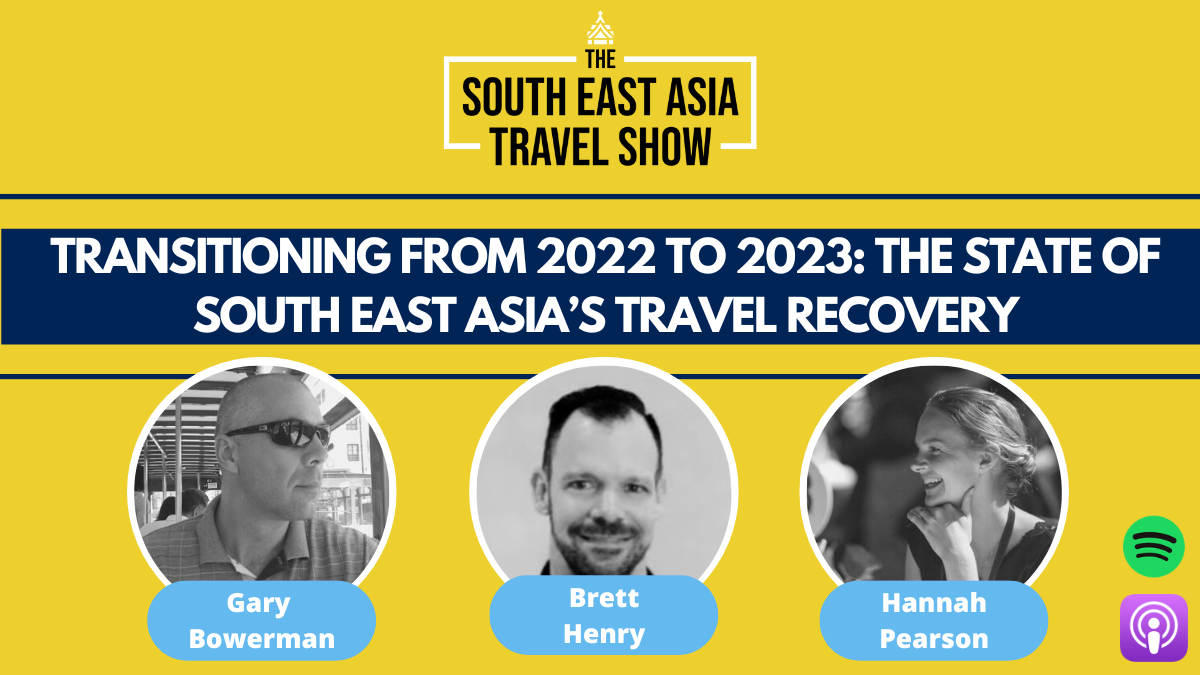
2022 was a compressed year. Most South East Asian countries only welcomed back tourists in the 2nd quarter. Many markets are still adjusting to the pandemic impacts.
This week, we teamed with Brett Henry , President of B2B hospitality marketplace MG Group , for a livestream assessing the state of play for South East Asia’s recovery.
We packed in plenty of airline, hotel and visitor arrivals data, insights and discussion into 55 minutes. Well worth a listen!
Listen to Transitioning From 2022 to 2023: The State of South East Asia’s Travel Recovery , here:
🎧 Website 🎧 Spotify 🎧 Apple Podcasts
Or search for The South East Asia Travel Show on any podcast platform.
And, that’s a wrap for Issue 100.
The newsletter will take an extended break over Christmas and New Year, and will return on 15 January 2023.
Until then, find me on Twitter , LinkedIn , the Asia Travel Re:Set website and The South East Asia Travel Show .
Happy Holiday Travels,
Ready for more?
Ukraine crisis clouds Southeast Asia’s fragile tourism recovery
A decline in Russian visitors is expected to hit Southeast Asian destinations like Phuket and Bali hard.
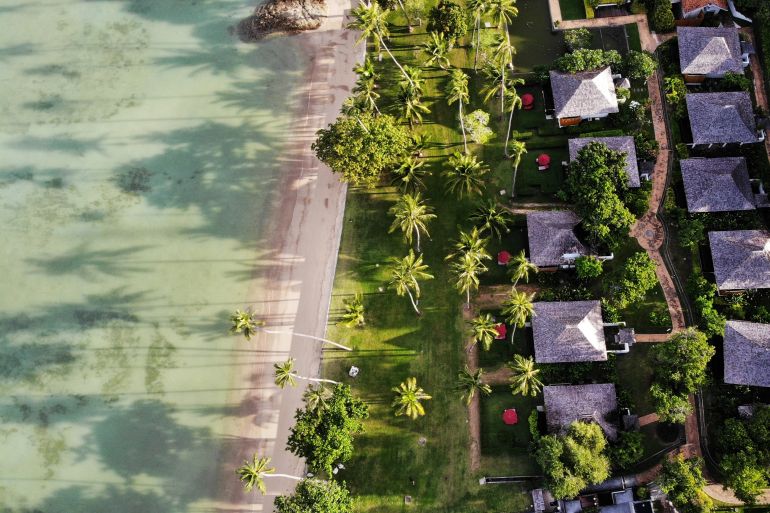
Bali, Indonesia – Travel industry figures fear the war in Ukraine could derail the much-anticipated recovery of tourism-dependent economies in Southeast Asia just as COVID-19 travel restrictions are finally being lifted across the region.
The Philippines, Laos, Cambodia and Thailand are now open to vaccinated travellers, albeit with costly and cumbersome protocols. Indonesia recently announced it would restart quarantine-free travel in Bali by March 14, while Vietnam plans to reopen to tourists on March 15.
Keep reading
Biden administration shields ukrainians in us from deportation, us: former officer cleared in shooting during breonna taylor raid, latest ukraine updates: us slams russian nuclear plant attack, russians advance towards ukraine’s largest nuclear power plant.
The most recent World Tourism Organization (UNWTO) Panel of Experts’ survey found nearly two-thirds of travel professionals expected their fortunes would improve this year on the back of easing border restrictions and positive data from 2021.
Global tourism receipts for 2021 reached $1.9 trillion, up 19 percent compared with the previous year, according to the UNWTO. Overall global passenger traffic improved eight percentage points, with demand down 58 percent compared with 2019, according to the International Air Transport Association – although the Asia Pacific’s recovery lagged other regions.
But the war in Ukraine, sanctions against Russia and airspace restrictions have dampened projections in a region where Russians became the largest and most spendthrift group of visitors for many top destinations during the pandemic, displacing Chinese unable to travel due to their country’s strict border controls.
The fallout is already being felt in popular destinations such as the Thai resort island of Phuket, where Russians account for 51,000 of the 278,000 foreigners who visited the island between November and February, according to the Tourism Authority of Thailand.
“We have been speaking to many hoteliers that are reporting a lot of cancellations because of reduced air traffic,” Bill Barnett, director of C9 Hotelworks, a consultancy in Phuket, told Al Jazeera.
Gary Bowerman, a travel analyst based in Kuala Lumpur, said Russian visitors have been a priority market for destinations including Thailand, Vietnam, and Indonesia’s Bali since the decline in Chinese tourists.
“So for sure the war will affect those countries’ re-openings,” Bowerman told Al Jazeera.
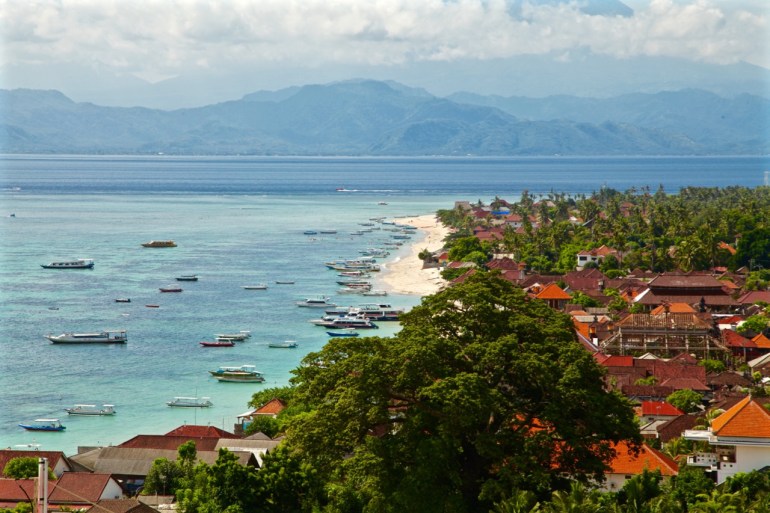
In Bali, Russia quickly overtook Australia as the largest source of tourists after Canberra banned its residents from travelling abroad, with 68,000 Russian nationals flying to the island in 2020, according to Statistics Indonesia.
Russians’ spending on food, accommodation, transport and tours has provided vital economic stimulus for the island, where tourism accounted for 60 per cent of gross domestic product before the pandemic.
But with the value of the rouble plunging to record lows, the number of Russians who can afford to travel overseas is set to shrink. Just getting there is likely to be a challenge.
Last month, Singapore Airlines, one of the few airlines offering regular international flights to Bali, announced an immediate and indefinite suspension of its service between its hub of Changi Airport and Moscow.
“Things are a total mess back home. Prices are skyrocketing, people will start losing their jobs and the bandwidth for withdrawing money is getting narrower,” Jaleel Mubarak, a Russian IT professional based in Bali who is preparing to fly home to be with his children, told Al Jazeera.
“Technically leaving Russia will become very challenging soon and I think Indonesia will also get in line with the Western world with sanctions,” said Mubarak, referring to Indonesian President Joko Widodo’s statement that the Russian invasion of Ukraine was “unacceptable”.
Rising oil prices
Tourists from Russia and Ukraine will not be alone in facing new challenges flying to Southeast Asia as a result of the conflict.
Russia accounts for about 10 percent of the world’s supply of crude oil, and markets are bracing for serious disruptions due to sanctions and possible retaliation by Moscow. On Wednesday, the global benchmark hit $115 per barrel just days after breaching the crucial $100 mark for the first time since 2014.
“If you look at the bigger picture, oil is now more than $100 a barrel and if it stays there or goes even higher, the price of jet fuel will go through the roof,” said Bowerman, the Kuala Lumpur-based analyst. “Normally after a lull like COVID, airlines would launch extra flights and discount fares to win back the market. But the price of jet fuel is going to make discounting impossible.”
Bowerman said airlines could struggle to obtain sufficient supplies of fuel.
“Long-haul airlines will be scrambling just to find it,” he said. “The potential for this to draw down global demand for air travel is significant.”
The banning of Russian planes from airspace over the United States, European Union, United Kingdom and Canada, along with retaliatory bans by Russia, puts a further dampener on the recovery.
Flying around Russia, the world’s largest country and a bridge between Europe and Asia, will add hours to flight time on some routes. Just one extra hour of flight time adds between $11,000 and $20,000 to the cost of a journey, according to John Gradek, a lecturer of aviation management at McGill University.
Flights between Europe and East Asia will be most affected in the immediate term. Airlines including Finnair and JAL have already cancelled or rerouted flights to top destinations, including Tokyo, Seoul, Shanghai and London. But the bans lay another speed bump on the road to recovery for tourism-dependent economies in Southeast Asia.
“People are not going to say we won’t travel overseas because there is a war going on in Europe,” said Barnett, the Phuket-based consultant.
“But we have not yet seen the full financial impact of the war on oil prices and inflation. If the European market goes down and China doesn’t come back, it won’t be a good thing for an already volatile market.”
Can India Drive Southeast Asia’s Tourism Recovery?
With China's borders still closed, Southeast Asian nations are looking for a new potential source market to offset the loss - could India be it?

- China accounted for 22% of 2019 arrivals into Southeast Asia - that number has dropped to just 2.6% 2022 YTD
- India is being championed as the next top source market for Southeast Asia due to its high-growth outbound market
- India is now one of the top source markets for Southeast Asia in 2022, accounting for 13%
The tourism industry in Southeast Asia is slowly but surely getting back on its feet after two years of being hard-hit by the pandemic. As borders reopen and travel restrictions ease, Southeast Asian countries are determinedly going the extra mile to draw tourists back in 2022.
Why the focus on India - what about China?
When talking about top arrivals for Southeast Asia pre-pandemic, China is one of the markets that comes to mind. China accounted for 22% of total arrivals in 2019 for Indonesia, Malaysia, the Philippines, Singapore, Thailand and Vietnam. However, that figure has dropped to just 2.6% in the first half of 2022. With China still under strict lockdown restrictions, Southeast Asian countries are in need of a new potential market to offset the loss.
Southeast Asian markets are setting high targets for the Indian market
India is being championed by Southeast Asian countries as the next top source market, with its growing outbound market, high traveller confidence, rising interest in Southeast Asia and the continuously expanding direct air travel links with Southeast Asia. Malaysia is targeting 100,000 Indian arrivals in 2022, and growing that number to 1 million by 2024, whereas Thailand is aiming for 500,000 in 2022 alone.
Tourism arrivals from India into Southeast Asia were steadily increasing in the years leading up to the pandemic, however, the figure is still relatively small compared to giant markets like China. As India opens up outbound travel, Southeast Asian countries have intensified their promotional efforts in a race to attract Indian tourists, including launching campaigns and roadshows, as well as participating in travel shows in India.
Indian interest in the region is growing
Southeast Asia is gaining interest from India as borders reopen, with Singapore, Thailand, and Indonesia ranking within the top 10 in terms of travel searches from India in April-June 2022. Thailand and Indonesia rose swiftly in the ranks compared to their 21st and 33rd placings, respectively, in Q1 2022.

India is now among the top 10 source markets for many Southeast Asian countries. It was the top arrivals market into Thailand in January-May 2022 with 122,463 visitors, the second largest source market for Singapore (154,784), and the fifth largest for Indonesia (27,239). Indian arrivals in Thailand, Singapore, and Indonesia are now surpassing those of China, and they are also occupying a considerably larger market share overall compared to pre-pandemic.
On top of that, Singapore, Malaysia, Thailand, and Vietnam all have direct air links with India from their major cities, with their local carriers continuously expanding their Indian network and operations. Vietjet, for instance, will increase its connectivity to a total of 17 direct routes between Vietnam and India in Q4 2022. The total number of seats for Vietnam-India direct flights is now six times higher than it was in 2019.
Driving trip inspiration to action takes time
Indian travellers can be considered a major driving force behind Southeast Asian tourism recovery at the moment, filling in the absence of pre-pandemic top source markets that are still facing tight border restrictions.
However, the number of Indian arrivals, and the total arrivals to Southeast Asian countries, are still only a fraction of pre-pandemic figures.
Southeast Asia needs time to bounce back to pre-pandemic levels - and needs not just Indian travellers, but also the return of travellers from other previous top source markets - to truly recover. Nurturing new markets takes time, even with strengthened efforts including opening new air routes, participating in travel fairs, and launching attractive campaigns.
Southeast Asia will likely not see a significant shift in Indian travellers’ preferences in the short-term, but rather might see it in the medium-term. It will surely be interesting to see whether India can be the new leading source market for Southeast Asia in the near future, or whether it will again be overshadowed by markets like China, when it ultimately reopens.
Pear Anderson is an industry-leading travel market intelligence consultancy. We represent companies looking for travel market research or travel trade sales representation in the Southeast Asian market.
- Read more insights about Southeast Asia
Featured Clients

Let's Work Together
Your privacy.
We want to use cookies to improve your user experience. Let us know if you agree.
- Subscribe Now
Southeast Asia’s tourism industry begins uneven recovery
Already have Rappler+? Sign in to listen to groundbreaking journalism.
This is AI generated summarization, which may have errors. For context, always refer to the full article.
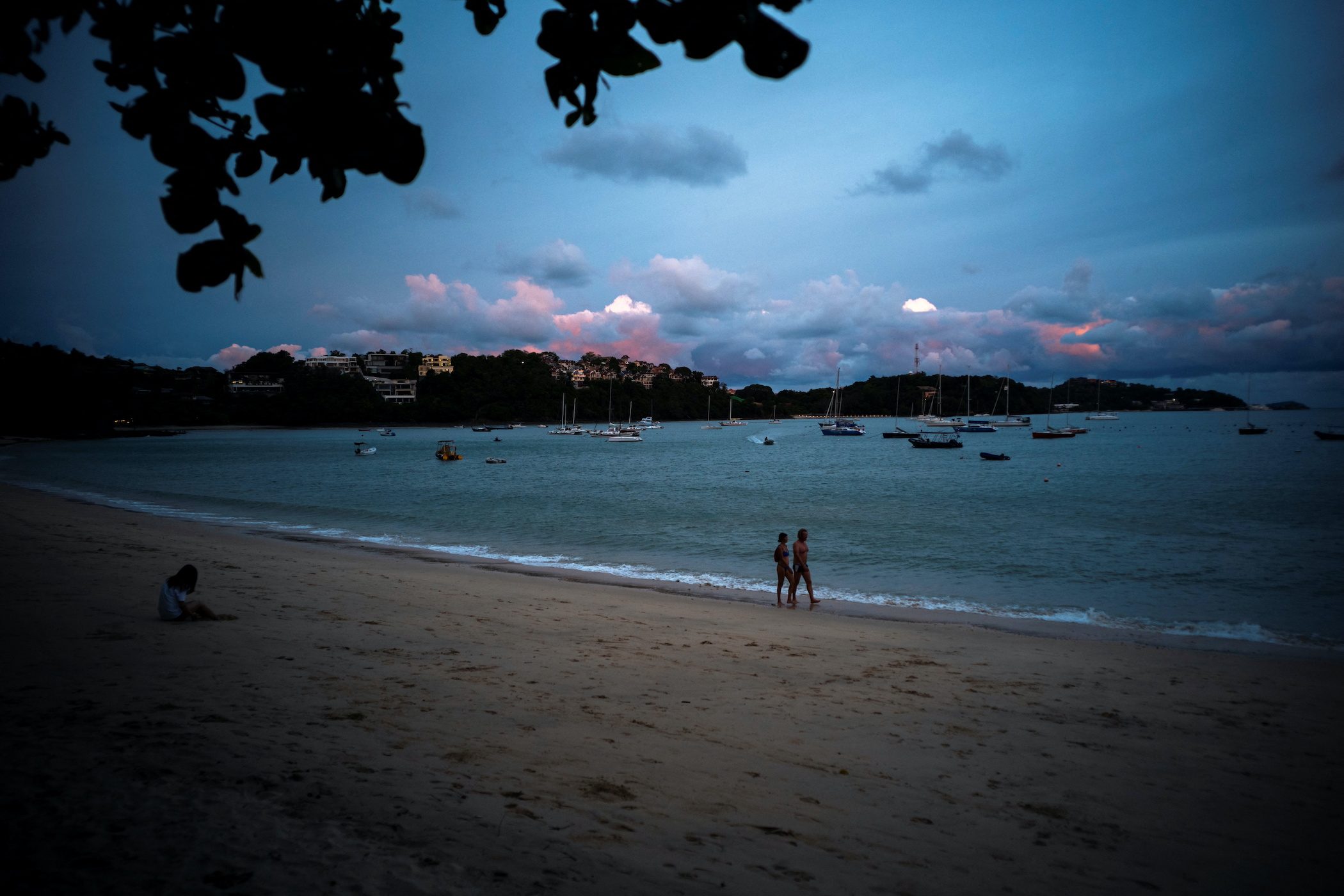
TOURISM. Tourists walk at a beach in Phuket, Thailand, April 4, 2022.
Athit Perawongmetha/Reuters
Two years after tourism in Southeast Asia ground to a halt, travelers are getting back on planes as entry and COVID-19 quarantine rules are lifted in the region, but a full recovery will be slow and some long-time hotspots are falling out of favor.
International airline bookings to Southeast Asia reached 38% of pre-pandemic levels by late March, according to travel firm ForwardKeys. They were at less than 10% of 2019 levels at the start of the year.
Singapore and the Philippines led a sharp uptick in bookings.
“We are the first to cut all the red tape,” said Philippine Tourism Secretary Bernadette Romulo-Puyat. “Tourists are quite happy because upon arrival, they are free to go.”
These countries now require vaccinated travelers to only perform a rapid antigen test before arrival , whereas more complicated requirements in Thailand have knocked the former tourist favorite out of the top league.
The ForwardKeys data showed Singapore and Philippines bookings were at 72% and 65% of 2019 levels, respectively, while Thailand was at just 24%.
“The on-arrivals PCR can cost 2,000 to 2,500 baht ($60 to $75) and can cost a lot especially for groups, [making] people hesitant to travel,” said Marisa Sukosol Nunbhakdi, president of the Thai Hotels Association.
“If another country does not have entry requirements, people would rather go there…less hassle.”
Bookings are a forward-looking indicator, and arrival figures also include returning locals.
Singapore and the Philippines have large outbound markets compared to Thailand, said Brendan Sobie, an independent aviation analyst.
Asia, though, is lagging a recovery in other regions including Europe, which eased restrictions months ago.
Domestic and international traffic within the Asia Pacific this year will only reach 68% of 2019 levels and hit pre-pandemic traffic by 2025, a year behind the rest of the world, the International Air Transport Association said.
For example, visitors to Singapore surged nearly four times in February from a year earlier, when the city-state had restricted entry. But that was just 9% of arrivals in February 2020 and included an influx of holders of work visas from Malaysia and India.
Thailand will take until 2026 to make a full recovery, the governor of its central bank said on Monday, April 11. In 2019, tourism accounted for about 12% of the country’s gross domestic product (GDP).
Travel and tourism in Southeast Asia – known for its white sand beaches, historical architecture, and warm climate – contributed $380.6 billion to the region’s GDP in 2019, or 11.8% of the total, according to the World Travel & Tourism Council.
‘We miss you’: Philippines wants Koreans back for tourism
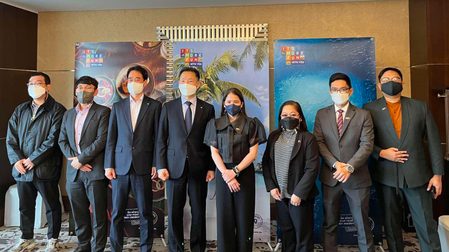
No Chinese tourists
The profile of international travelers to Southeast Asia also has shifted. Once making up Asia’s largest group of travelers, Chinese tourists are stuck at home due to strict lockdowns .
More than a quarter of the 40 million tourists who had visited Thailand in 2019 were Chinese. This year, the country expects between 5 million and 10 million international arrivals from places like Malaysia and other Southeast Asian neighbors.
Japan, which remains shut to tourists itself, has seen only small numbers of travelers to Southeast Asia, while Russia’s invasion of Ukraine has kept away the typically large number of Russian tourists in the region.
A third of the travelers to Southeast Asia so far this year were from Europe, up from 22% in 2019, while those from North America have more than doubled to 21% from 9% in 2019, according to ForwardKeys. Travelers from Asia made up just 24% so far this year, versus 57% in 2019.
Popular Europe
“Things changed a lot for the better over the last month. We are seeing a boom in bookings,” said Rabil Lian, a tour guide with a top Singaporean travel agency, who recently got his job back after filling a temporary government job through the pandemic.
Lian, 51, led five tour groups to Europe in the past four months, and said Australia was becoming a popular destination as well. But he said many were waiting for Japan and Taiwan to ease rules.
In Vietnam, foreign tourists nearly doubled in the first quarter this year from a year earlier. But the country, which lifted nearly all curbs only last month, expects just over a quarter of the international arrivals it saw in 2019.
“I saw all the famous food stores were still there as they have domestic demand and didn’t feel like there was a huge gap left by [the lack of] tourism over the last two years,” said Justin Ong, a Singaporean journalist who visited Vietnam last month, his first trip since the pandemic hit. – Rappler.com
$1 = 33.4500 baht
Add a comment
Please abide by Rappler's commenting guidelines .
There are no comments yet. Add your comment to start the conversation.
How does this make you feel?
Related Topics
Recommended stories, {{ item.sitename }}, {{ item.title }}, philippine tourism, dot sees siargao island leading caraga’s holy week tourism resurgence.

WATCH: The Chocolate Hills controversy in 1 minute

TIMELINE: The Chocolate Hills resort controversy

Beat the heat! Visit 4 hidden paradises in Occidental Mindoro this summer

[WATCH] A tour of Sagbayan Peak amid Chocolate Hills resort controversy
![south east asia tourism recovery [WATCH] A tour of Sagbayan Peak amid Chocolate Hills resort controversy](https://www.rappler.com/tachyon/2024/03/SagbayanPeakBohol_johnsitchon_March152024.jpg?resize=257%2C257&crop=327px%2C0px%2C724px%2C724px)
Checking your Rappler+ subscription...
Upgrade to Rappler+ for exclusive content and unlimited access.
Why is it important to subscribe? Learn more
You are subscribed to Rappler+

Why Southeast Asia Needs to Embrace Sustainable Tourism
01:00 pm | 13 April 2022

Sandiaga Salahuddin Uno wished hotels would stop offering buffets to tourists. Indonesia’s Minister of Tourism and Creative Economy, who used to run hotels, felt buffets are a waste especially at a time when tourism businesses needed to bring down costs as they try to revive their operations in the wake of the coronavirus disease (COVID-19) pandemic.
“Come on, guys. Buffet in this era? People don't go for buffets,” Uno said during the recently held Southeast Asia Development Symposium (SEADS) organized by the Asian Development Bank (ADB). He said tourists no longer go for buffets, preferring to eat by themselves or consume a limited amount of food. In the end, the food just goes to waste, he said.
Uno made the statement during the panel discussion, “Driving an Inclusive Tourism Recovery in Southeast Asia,” where he and the other speakers agreed that shifting to sustainable tourism is key to reviving the region’s travel sector.
Tourist arrivals to the region plunged 82% in 2020 as travel ground to a halt after countries imposed lockdowns and border closures to stop the spread of the virus.
As Southeast Asia starts reviving travel, there is a growing consensus the pandemic is an opportunity to fix structural issues that have plagued tourism over the years and rebuild it greener.
Across the region, there are numerous examples of rapid tourism growth harming the environment. For instance, Boracay island in the Philippines saw tourist arrivals increase 160% between 2011 and 2017 but sewer and waste management systems were unable to keep up. As a result, in 2018, Boracay was temporarily closed to visitors for about 6 months for environmental rehabilitation.
Shift toward more conscientious travel
ADB Southeast Asia Department Deputy Director General Winfried Wicklein, one of the panelists, said reviving tourism is vital to Southeast Asia’s recovery as before the pandemic, it contributed about 12% to the region’s gross domestic product and employed more than 40 million workers, majority of whom are women working for small and medium-sized enterprises supplying goods or services to the sector.
“I think COVID-19 in some ways will be an opportunity also, as bad as it has been, to recover and to build back better in an environmentally sustainable fashion so we can address some of the structural issues that we've always wanted to address and just basically start from new—the right way,” he said.
The United Nations World Tourism Organization (UNWTO) defines sustainable travel as “tourism that takes full account of its current and future economic, social, and environmental impacts, addressing the needs of visitors, the industry, the environment, and host communities.”
Indonesia is already making the shift, with Uno’s plea to the hotel and accommodation operators just one of the moves Southeast Asia’s most populous country has made.
Indonesia is also moving away from mass tourism in favor of ecotourism and sports tourism and is bent on promoting nature and culture to tourists. “We're moving away from quantity. We're focusing on quality and sustainability,” the minister said.
As part of the shift, Indonesia is pushing community-based tourism to empower 3,000 villages across the country. Through this project, target villages can offer creative economy products to tourists like local food and traditional keepsakes like headgears. “This is a new way of quality tourism whereby it impacts the local communities,” he said.
He said travelers spending their holiday in Indonesia can offset the carbon footprint from their flights through activities like mangrove planting and waste management, and by empowering local communities who benefit from their tourist dollars.
Indonesia is also targeting longer-staying tourists, he said, referring to “digital nomads”—remote workers who stay a month or longer in destinations to combine work with leisure.
Having longer-staying tourists is better for the local economy because they tend to spend more on locally produced goods and services, which has positive economic knock-on effects. It is better for the environment as increasing the availability and consumption of local products by fewer but longer-staying visitors can shorten supply chains and reduce negative environmental externalities—two critical factors for building destination resilience and sustainability.
Liz Ortiguera, CEO of the Pacific Asia Travel Association (PATA), predicts the industry will move toward longer-stay designed properties to cater to these travelers. “That's what the consumer wants—they want the ‘workation.’ They want to have multiple purposes when they travel to make it more efficient.”
It will be up to governments on how they can create the right environment that would support the sustainable form of travel that would bring funds back into the community and support small businesses to be more sustainable for the local culture and the local economy
Asked whether governments should forego taxing accommodation providers to allow the industry to recover first, Wicklein replied, “I don't think the government should step aside totally because we have an opportunity now to rebuild better.”
He noted the need to sit down with governments and help them strengthen the regulatory framework that will address policy gaps relating to taxing online businesses catering to tourists.
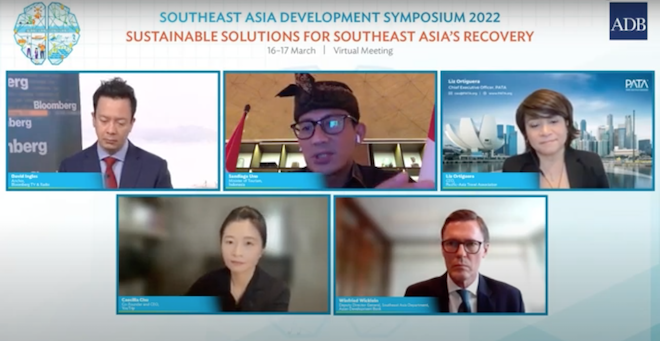
Rise of the intelligent traveler
Stakeholders should also prepare to attract a new type of tourists—the intelligent luxury traveler, said Ortiguera. This “modern responsible traveler” looks more deeply, she said. “It's not just doing an Instagram tour to take a photo in a much traveled location just to get a very superficial introduction. It's intelligent luxury and that means wellness for yourself, for the community, and also for the environment. So it's like a holistic wellness. It's a much more inclusive and sustainable offering, both for the host country as well as the traveler.”
As countries revive tourism, they need to develop the market to cater to these travelers. Travelers should also seek destinations offering these types of services and products when they return to the region, she said.
Countries also need to think about reviewing metrics for sustainable travel and making sure tourist dollars that come in actually benefit the community and the local economy. “Having the right metrics will also help us as leaders steer in the right direction in terms of what to encourage. It won't just be about heavy traffic and we don't want that actually. We want dispersion. We want longer stays. And new forms of travel will emerge.”
Technology’s role
Technology also has a role to play as countries try to nurse tourism back to health.
Caecilia Chu, cofounder and CEO of digital travel wallet YouTrip, said small businesses in the tourism industry should tap digital tools to unlock opportunities for growth. For instance, they could put up a digital storefront or advertise on global online platforms to widen their reach, she said.
Adopting digital payment systems can also help them, as it can reduce the time and cost spent on transactions. “By digitalizing more of the businesses in the region, I think it would certainly help reduce the transaction cost and time and really help everyone do a bit more business.”
Ortiguera said technology can also play a critical role in upskilling and reskilling the industry’s frontline and lower-income workers, particularly on issues like health and safety and learning about online marketing.
Uno has observed that in Indonesia, tourism businesses which have not embraced technology struggle to fill in occupancy.
Green financing
Greening tourism though will have a cost, said Wicklein, noting countries would need to attract investments and use innovative financing approaches at a time when state coffers are already strained as countries press with their post-pandemic recovery efforts.
He cited ADB’s newly launched Southeast Asia Sustainable Tourism Hub among resources countries may tap. He said the hub can help develop and finance innovative tourism projects, promote public–private partnership tourism projects, build tourism destination management capacity, and support some of the technologies that can bolster the industry.
He noted that one of the issues in development finance in the region has been the lack of bankable projects. The facility can thus help member countries develop and structure projects that are bankable for the private sector and help governments develop and design suitable projects. It can also help provide access to some of the green finance mechanisms and facilities ADB has set up.
Wicklein is optimistic about what these green tourism projects would mean for Southeast Asia's labor market. “Green means jobs,” he said.
Asia-Pacific Trade Facilitation Report 2024: Promoting Sustainability and Resilience of Global Value Chains
Reuse of electric vehicle batteries in asean, asean finance ministers take on pivotal role in climate action, asian economic integration report 2024: decarbonizing global value chains, budgeting for gender equality: a practical guide to gender budgeting, related articles, 5 digital solutions that can spur people to travel again, what southeast asian countries need to do to shift to sustainable tourism, philippines’ #safetripph campaign extols travel can still be fun despite covid-19, seize opportunities to rebuild tourism and reimagine cities of the future, say leaders at seads 2022, covid-19 and the future of tourism in asia and the pacific.

Want to Learn More?
Subscribe to the Newsletter
Email Address Submit
Visit myFOCUS to see your saved articles and the topics you follow, and to update your profile.
Southeast asia tourism rebound to continue in 2024, analysts say.
Maybank Research predicts singled out Malaysia, Singapore and Thailand for the fastest recovery in 2024.
Maybank Research has released a report analysing the growth prospects for Southeast Asia’s tourism industry. It highlighted expected growth in Malaysia, Singapore and Thailand.
The report anticipates a 27 per cent growth in visitor arrivals to ASEAN-6 countries by December, reaching 98 per cent of pre-pandemic levels.
In November 2023, visitor arrivals had reached 77 per cent of pre-pandemic levels. Looking ahead, Maybank expressed optimism that numbers will surpass government targets in Indonesia, the Philippines and Malaysia. However, analysts pointed out the Asia-Pacific region saw a deceleration in its tourism recovery in the second half of 2023.
Maybank predicts a return to pre-pandemic levels for outbound Chinese tourists by late 2025, noting that Chinese tourism to ASEAN had only recovered to 38 per cent of pre-pandemic levels in November 2023. It believes that increased flight capacity, lower fares, and visa waivers for Chinese citizens will help improve the situation.
See also: Chinese outbound tourism recovery to be slower than expected: Nomura
Latest Articles
Nagacorp posts ggr of us$145m for q1, digiplus aims for double-digit revenue growth, thai deputy police chief probed for alleged laundering of gambling money, the philippines: us$2.45bn tourism trade surplus in 2023, macau airport sees an 80% rise in easter holiday passengers, agem index down 3.3% in march.
TheJakartaPost
Please Update your browser
Your browser is out of date, and may not be compatible with our website. A list of the most popular web browsers can be found below. Just click on the icons to get to the download page.
- Destinations
- Jakpost Guide to
- Newsletter New
- Mobile Apps
- Tenggara Strategics
- B/NDL Studios
- Archipelago
- Election 2024
- Regulations
- Asia & Pacific
- Middle East & Africa
- Entertainment
- Arts & Culture
- Environment
- Work it Right
- Quick Dispatch
- Longform Biz
Southeast Asia's tourism industry begins uneven recovery
International airline bookings to Southeast Asia reached 38 percent of pre-pandemic levels by late March, according to travel firm ForwardKeys. They were at less than 10 percent of 2019 levels at the start of the year.
Share This Article
Change size.
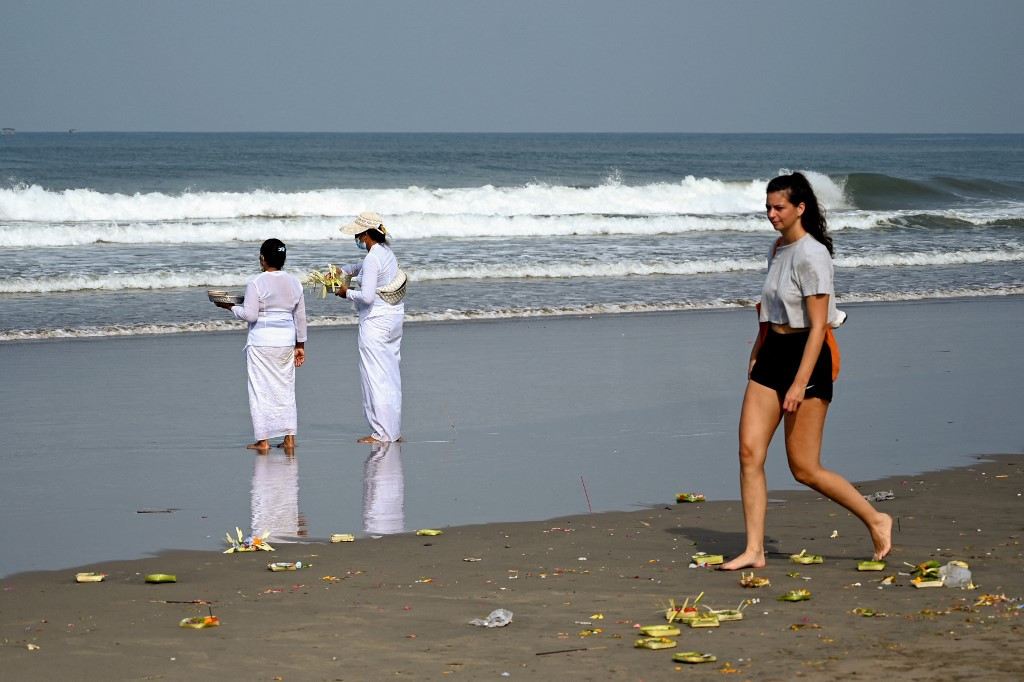
wo years after tourism in Southeast Asia ground to a halt, travellers are getting back on planes as entry and COVID-19 quarantine rules are lifted in the region, but a full recovery will be slow and some long-time hotspots are falling out of favour.
Singapore and the Philippines led a sharp uptick in bookings.
"We are the first to cut all the red tape," said Philippines tourism minister Bernadette Romulo-Puyat. "Tourists are quite happy because upon arrival, they are free to go."
These countries now require vaccinated travellers to only perform a rapid antigen test before arrival, whereas more complicated requirements in Thailand have knocked the former tourist favourite out of the top league.
The ForwardKeys data showed Singapore and Philippines bookings were at 72 percent and 65 percent of 2019 levels, respectively, while Thailand was at just 24 percent.

Every Monday
With exclusive interviews and in-depth coverage of the region's most pressing business issues, "Prospects" is the go-to source for staying ahead of the curve in Indonesia's rapidly evolving business landscape.
By registering, you agree with The Jakarta Post 's Privacy Policy
for signing up our newsletter!
Please check your email for your newsletter subscription.
"The on-arrivals PCR can cost 2,000-2,500 baht ($60-$75) and can cost a lot especially for groups, (making) people hesitant to travel," said Marisa Sukosol Nunbhakdi, president of the Thai Hotels Association.
"If another country does not have entry requirements, people would rather go there … less hassle."
Bookings are a forward-looking indicator, and arrival figures also include returning locals.
Singapore and the Philippines have large outbound markets compared to Thailand, said Brendan Sobie, an independent aviation analyst.
Asia, though, is lagging a recovery in other regions including Europe, which eased restrictions months ago.
Domestic and international traffic within the Asia Pacific this year will only reach 68 percent of 2019 levels and hit pre-pandemic traffic by 2025, a year behind the rest of the world, the International Air Transport Association said.
For example, visitors to Singapore surged nearly four times in February from a year earlier, when the city-state had restricted entry. But that was just 9 percent of arrivals in February 2020 and included an influx of holders of work visas from Malaysia and India.
Thailand will take until 2026 to make a full recovery, the governor of its central bank said on Monday. In 2019, tourism accounted about 12 percent of the country's gross domestic product (GDP).
Travel and tourism in Southeast Asia - known for its white sand beaches, historical architecture and warm climate - contributed $380.6 billion to the region's GDP in 2019, or 11.8 percent of the total, according to World Travel & Tourism Council.
No Chinese Tourists
The profile of international travellers to Southeast Asia also has shifted. Once making up Asia's largest group of travellers, Chinese tourists are stuck at home due to strict lockdowns.
More than a quarter of the 40 million tourists who had visited Thailand in 2019 were Chinese. This year, the country expects between 5 million and 10 million international arrivals from places like Malaysia and other Southeast Asian neighbours.
Japan, which remains shut to tourists itself, has seen only small numbers of travellers to Southeast Asia, while Russia's invasion of Ukraine has kept away the typically large number of Russian tourists in the region.
A third of the travellers to Southeast Asia so far this year were from Europe, up from 22 percent in 2019, while those from North America have more than doubled to 21 percent from 9 percent in 2019, according to ForwardKeys. Travellers from Asia made up just 24 percent so far this year, versus 57 percent in 2019.
Popular Europe
"Things changed a lot for the better over the last month. We are seeing a boom in bookings," said Rabil Lian, a tour guide with a top Singaporean travel agency, who recently got his job back after filling a temporary government job through the pandemic.
Lian, 51, led five tour groups to Europe in the past four months, and said Australia was becoming a popular destination as well. But he said many were waiting for Japan and Taiwan to ease rules.
In Vietnam, foreign tourists nearly doubled in the first quarter this year from a year earlier. But the country, which lifted nearly all curbs only last month, expects just over a quarter of the international arrivals it saw in 2019.
"I saw all the famous food stores were still there as they have domestic demand and didn't feel like there was a huge gap left by (the lack of) tourism over the last two years," said Justin Ong, a Singaporean journalist who visited Vietnam last month, his first trip since the pandemic hit.
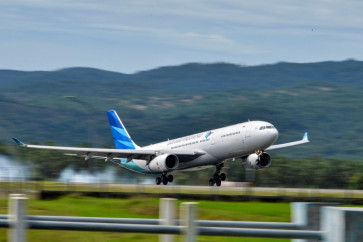
Garuda Indonesia to expand fleet this year
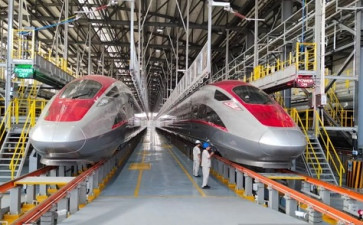
RI officials no idea about Bruneian firm's HSR proposal in Kalimantan
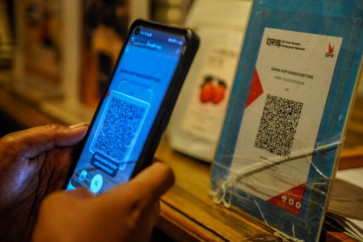
MoU opens way for Indonesians to use QRIS in Brunei, Laos
Related articles, jokowi cannot promise rice aid will last until december, with wary eye, china courts president-elect prabowo, ikea foundation backs emerging market ev push with $100 million grant, ai-fueled disinformation in southeast asia shows need for fact-checking, literacy, indonesia can spearhead gender-inclusive disarmament initiative, related article, more in business.

WIKA to raise fund for work on Jakarta's sea wall, new capital city

After doubling its margin in 2023, Bibli is optimistic about 2024
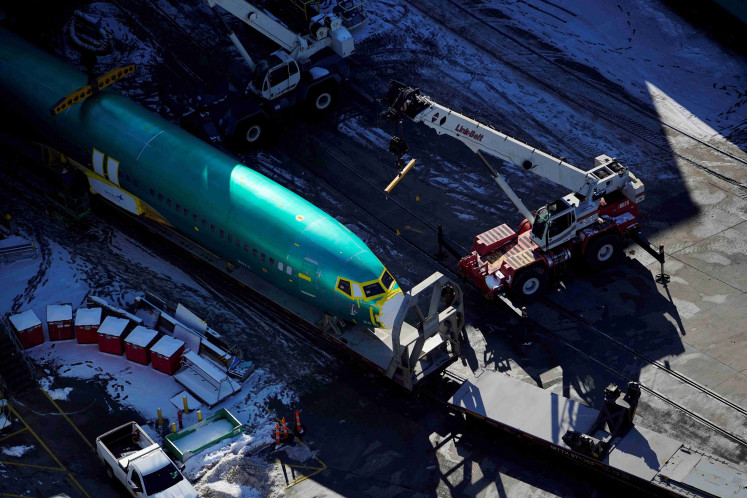
US Justice Department to meet Boeing fatal crash victims' lawyers
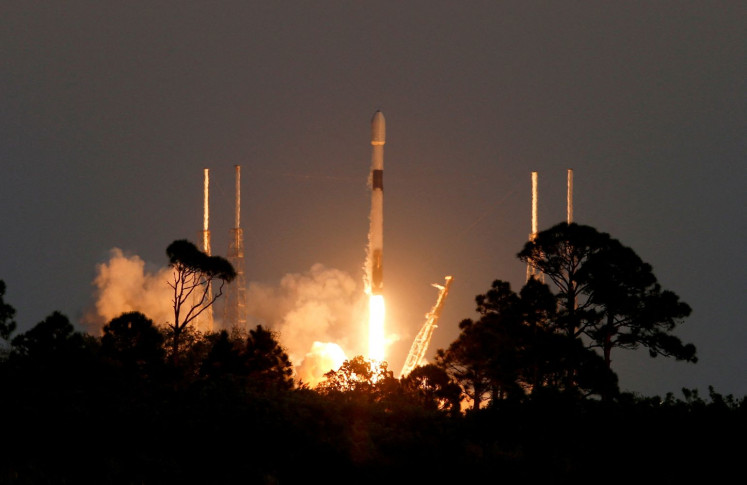
Starlink to begin network trials in Nusantara in May

A telling silence
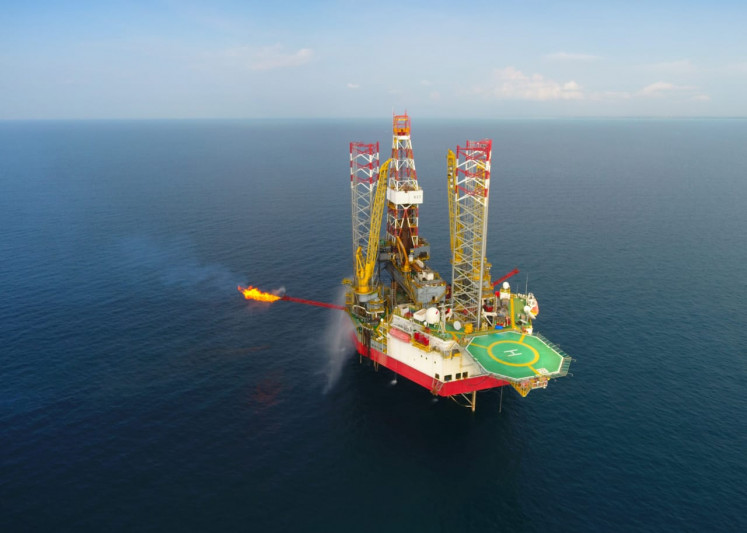
PLN mulls importing LNG amid likely shortfall in local gas supply
Police raid drug lab in semarang, nab smugglers in medan, china's green-tech manufacturing powerhouse, brit rock band the libertines recall their happiest and darkest days in paris, asia stocks stumble on risk-off mood; oil prices climb, academic freedom declining globally, index finds.
- Jakpost Guide To
- Art & Culture
- Today's Paper
- Southeast Asia
- Cyber Media Guidelines
- Paper Subscription
- Privacy Policy
- Discussion Guideline
- Term of Use
© 2016 - 2024 PT. Bina Media Tenggara
Your Opinion Matters
Share your experiences, suggestions, and any issues you've encountered on The Jakarta Post. We're here to listen.
Thank you for sharing your thoughts. We appreciate your feedback.
- Knowledge Hub
- Product Status

Find a Data Set
- Browse All Data Sets
- Global Airline Schedules Data
- Flight Status Data
- Historical Flight Data
- Flight Seats Data
- Flight Emissions Data
- Minimum Connection Times
- Master Data
- Passenger Booking Data
- Global Flight Connections Data
- Airfare Data
How we deliver data
- Data Delivery
- Latest Product Updates
Data Suppliers
- Share your data
Try our Data
Flight data sets.
The world's most accurate and information-rich flight data
ANALYTICS PLATFORM
- Analyser Analytics Platform
EXPLORE ANALYSER MODULES
- Connections
DEMO ANALYSER PLATFORM
Powerful aviation analysis platform to drive commercial and operational decision making across the industry.
WE POWER THE AIR TRAVEL ECOSYSTEM
- Consultancies
- Governments & Security
- Travel Technology
- Airport Service Providers
TRUSTED BY LEADING ORGANISATIONS
- Air Black Box
- View All Case Studies
Springshot: Minimizing delays with OAG's Status Data
- All Blogs, Webinars & Podcasts
- Covid-19 Recovery
- Future of Travel
- Aviation Market Analysis
- Aviation Sustainability
- Data, Technology & Product
- Where To Meet Us
- Monthly Live Webinars
- Travel Recovery Tracker
- Busiest Flight Routes in the World
- Busiest Airports in the World
- Airline Frequency and Capacity Statistics
- Monthly OTP Analysis
- US Aviation Market Analysis
- South East Asia Market Analysis
- China Aviation Market Analysis
- View All Analysis
AVIATION NETWORK CHAMPIONS ASPAC
Awards for Asia-Pacific airlines and airports to recognize their dedication as they move towards full recovery.
OUR COMPANY
- Diversity & Inclusion
- OAG & The Environment
- Our Locations
- What's New At OAG
GET IN TOUCH
- Press Office
Explore a career at OAG. See the latest job openings here.
Southeast Asia Looks to India for Tourism Reboot
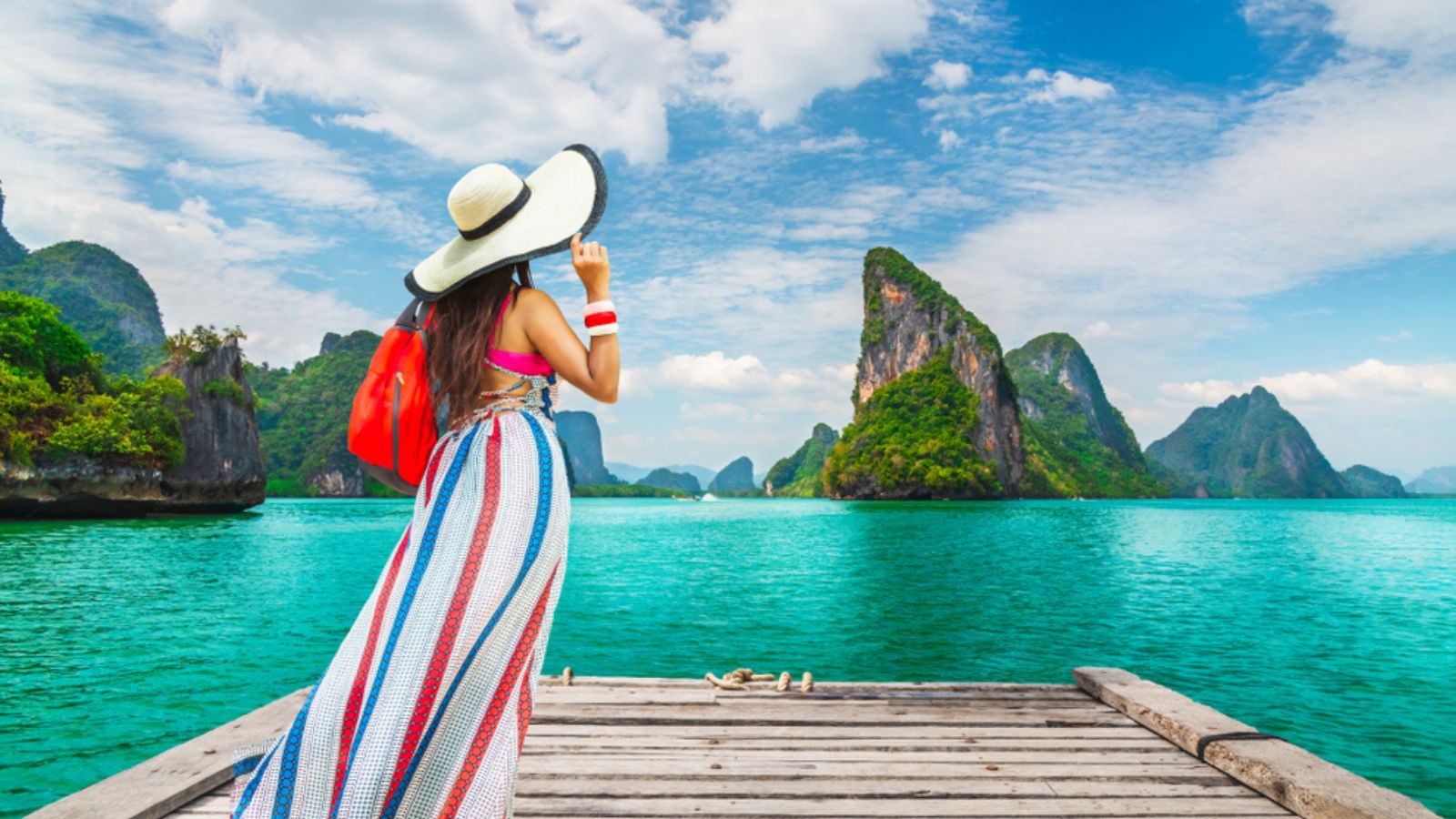
Leaders throughout Southeast Asia have made it a priority to attract more Indian and Chinese travellers as a quick fix to boost their tourism and aviation recovery. What’s clear though, is that whilst air capacity between India and Southeast Asia is reaching towards pre-pandemic levels and beyond, China-Southeast Asia’s capacity is slow to gain momentum.
When we look at air capacity from the two countries into Southeast Asia as of Q3 2023, China-Southeast Asia operated almost double the number of seats at 8 million vs India-Southeast Asia’s 3.8 million, whilst the recovery vs 2019 levels couldn’t be more different. China was -53% of 2019 levels, whilst India, by contrast, was just 7% down.
Closer analysis of India and Southeast Asia capacity for Q3 2023 vs Q3 2019, pre-pandemic, reveals:
- Singapore reached +13% recovery with- 1.5 million scheduled seats.
- Indonesia recorded an enormous +1,465% growth, albeit with a much more modest 31k seats.
- Vietnam, has been aggressively opening new routes and bolstering capacity, particularly to India , creating an additional 345k seats which simply didn’t exist in 2019.
- Malaysia and Thailand meanwhile, lag behind at -32% and -29% respectively.
Analysis of China and Southeast Asia capacity shows that there are pockets of recovery in the region:
- Singapore, once more, is tracking best for recovery at just -23% of 2019 levels and 2.3 million seats.
- Thailand, formerly one of the top international destinations by capacity for China, languishes at -60%.

Key Leisure Destinations Still Lag Behind
There is a noticeable lag in demand from China to purely leisure destinations, whilst demand for key capital cities, such as Jakarta and Hanoi, isa getting closer to pre-pandemic levels,
- Jakarta was just -2% down on 2019 levels, Bali was still at -71%.
- Hanoi was -7%, whilst Nha Trang was -86%.
- Phnom Penh was at -48%, Sihanoukville was at a staggering -100%, with no carriers restarting flights to the city.
However, analysis does highlight a key difference between Chinese and Indian air capacity to Southeast Asia: the connectivity to secondary and tertiary cities. China, despite the slower recovery to these destinations, has far more connections to leisure destinations in Southeast Asia, like Bali, Phuket, Phu Quoc, Kalibo (Boracay), Penang and Pattaya, whilst India has connections to Phuket and plans for Bali - but that’s it.
Making Entry Easier
Given the importance of Chinese tourism to Southeast Asia it makes sense that the Association of Southeast Asian Nations (ASEAN) and their respective governments are focusing their attention on China as the immediate ‘shot in the arm’ their tourism industry needs. India, on the other hand, will form part of their medium-term plan as connectivity grows. We have already seen action from some governments:
- Thailand: 13 September 2023 Thailand’s new Prime Minister Thavisin waived visas for Chinese nationals until 29 February 2024 with the hope of adding 700k international arrivals during Thailand’s year-end peak season.
- The Philippines: launched a pilot e-visa scheme for Chinese nationals on 24 August.
Will the same scheme be extended to Indian nationals? The Tourism Authority of Thailand (TAT) noted that it would monitor the results of the Chinese national visa waiver for two months before making a decision. However, local tourism association - the Association of Thai Travel Agents (Atta) - believes that the most critical obstacle to driving Indian arrivals is not the visa, but rather the bilateral air service agreement in place with India, which limits the number of seats.
Myanmar, keen to revive tourism and shake off perceptions about internal conflict, has opened up visas on arrival for both Chinese and Indian nationals, whilst Malaysia in its Budget 2024 strategy has set out vague plans to offer multiple entry visas for tourists from India and China.
To attract secondary and tertiary tier cities in both India and China, ASEAN tourism authorities like Tourism Malaysia have undertaken a charm offensive, with trade roadshows in destinations such as Changsha, Lanzhou and Xi’an in China, Amritsar, Lucknow, Nagpur, Pune, Goa and Cochin in India. Offbeat promotional strategies around Indian weddings, long seen as lucrative, have been devised, too - the TAT proposed a tax exemption on wedding jewellery being imported into the country.
Connectivity is Critical to Growth
For air capacity to continue growing to both India and China, increasing connectivity points across the region is a must. The Indian ambassador to Cambodia has promised that direct flights will soon start, Philippine Airlines and Cebu Pacific are said to be looking into the feasibility of opening up new routes to India, Bali is hoping for direct Indian flights, and the TAT are touting charter flights from China in Q1 2024 as a way to boost additional capacity in the market. For those markets that have seen an increase in Indian capacity, namely Indonesia and Vietnam, the push has been via the low-cost carriers, rather than mainline carriers - Vietjet for Vietnam, and IndiGo for Indonesia.
As for whether India and China need Southeast Asian tourists to the extent to which Southeast Asia needs them for tourism, the short answer is no. Whilst some ASEAN countries like Malaysia were in the top 10 arrivals in 2019 for India, and ASEAN countries into China in 2019 accounted for 25.9 million international arrivals, or around 18%, there is not the same urgency to see flights - and tourists - from the ASEAN region return.
The importance of India and China to ASEAN’s tourism industry will likely not diminish any time soon. Whilst China has the leading edge for arrivals currently and is therefore the golden source market all countries are aiming for, the more visionary tourism boards across the region are continuing to lay down solid promotional groundwork in tertiary cities within India, going beyond the major metropolises.
The fact that international arrivals into the region from India are nearing pre-pandemic levels is a clear indicator of its medium-term potential - and once flight capacity starts to ramp up beyond 2019 levels, as airlines plan, we could well see India joining China at the top of the table for tourism arrivals - an altogether much more robust future for the region than its previous over-reliance on the Chinese market.
RECOMMENDED:

We’re always adding new content, keep up to date by registering your interest here.
View our Privacy Notice
Related Insights
France’s enduring popularity as a travel destination.
11 September 2023
China’s International Travel Recovery Continues: Slow and Steady
31 August 2023

- The Star ePaper
- Subscriptions
- Manage Profile
- Change Password
- Manage Logins
- Manage Subscription
- Transaction History
- Manage Billing Info
- Manage For You
- Manage Bookmarks
- Package & Pricing
South-East Asia's tourism industry begins uneven recovery
- Philippines
Wednesday, 13 Apr 2022
Related News

Philippines to hold joint naval drills with US, Japan, Australia
South china sea on agenda of us, philippines, japan trilateral summit, cooperation with s. korea, philippines important for regional security: japan's kishida.
In the Philippines, vaccinated travellers have to only perform a rapid antigen test upon arrival. - AP
MANILA (Reuters):Two years after tourism in South-east Asia ground to a halt, travellers are getting back on planes as entry and Covid-19 quarantine rules are lifted in the region, but a full recovery will be slow and some long-time hotspots are falling out of favour.
International airline bookings to South-East Asia reached 38% of pre-pandemic levels by late March, according to travel firm ForwardKeys. They were at less than 10% of 2019 levels at the start of the year.
Singapore and the Philippines led a sharp uptick in bookings.
"We are the first to cut all the red tape," said Philippines tourism minister Bernadette Romulo-Puyat.
"Tourists are quite happy because upon arrival, they are free to go."
These countries now require vaccinated travellers to only perform a rapid antigen test before arrival, whereas more complicated requirements in Thailand have knocked the former tourist favourite out of the top league.
The ForwardKeys data showed Singapore and Philippines bookings were at 72% and 65% of 2019 levels, respectively, while Thailand was at just 24%.
"The on-arrivals PCR can cost 2,000-2,500 baht (US$60-$75) and can cost a lot especially for groups, (making) people hesitant to travel," said Marisa Sukosol Nunbhakdi, president of the Thai Hotels Association.
"If another country does not have entry requirements, people would rather go there ... less hassle."
Bookings are a forward-looking indicator, and arrival figures also include returning locals.
Singapore and the Philippines have large outbound markets compared to Thailand, said Brendan Sobie, an independent aviation analyst.
Asia, though, is lagging a recovery in other regions including Europe, which eased restrictions months ago.
Domestic and international traffic within the Asia Pacific this year will only reach 68% of 2019 levels and hit pre-pandemic traffic by 2025, a year behind the rest of the world, the International Air Transport Association said.
For example, visitors to Singapore surged nearly four times in February from a year earlier, when the city-state had restricted entry. But that was just 9% of arrivals in February 2020 and included an influx of holders of work visas from Malaysia and India.
Thailand will take until 2026 to make a full recovery, the governor of its central bank said on Monday. In 2019, tourism accounted about 12% of the country's gross domestic product (GDP).
Travel and tourism in South-East Asia - known for its white sand beaches, historical architecture and warm climate - contributed $380.6 billion to the region's GDP in 2019, or 11.8% of the total, according to World Travel & Tourism Council.
The profile of international travellers to South-East Asia also has shifted. Once making up Asia's largest group of travellers, Chinese tourists are stuck at home due to strict lockdowns.
More than a quarter of the 40 million tourists who had visited Thailand in 2019 were Chinese. This year, the country expects between 5 million and 10 million international arrivals from places like Malaysia and other South-East Asian neighbours.
Japan, which remains shut to tourists itself, has seen only small numbers of travellers to South-East Asia, while Russia's invasion of Ukraine has kept away the typically large number of Russian tourists in the region.
A third of the travellers to South-East Asia so far this year were from Europe, up from 22% in 2019, while those from North America have more than doubled to 21% from 9% in 2019, according to ForwardKeys.
Travellers from Asia made up just 24% so far this year, versus 57% in 2019.
"Things changed a lot for the better over the last month. We are seeing a boom in bookings," said Rabil Lian, a tour guide with a top Singaporean travel agency, who recently got his job back after filling a temporary government job through the pandemic.
Lian, 51, led five tour groups to Europe in the past four months, and said Australia was becoming a popular destination as well. But he said many were waiting for Japan and Taiwan to ease rules.
In Vietnam, foreign tourists nearly doubled in the first quarter this year from a year earlier. But the country, which lifted nearly all curbs only last month, expects just over a quarter of the international arrivals it saw in 2019.
"I saw all the famous food stores were still there as they have domestic demand and didn't feel like there was a huge gap left by (the lack of) tourism over the last two years," said Justin Ong, a Singaporean journalist who visited Vietnam last month, his first trip since the pandemic hit.
Tags / Keywords: Philippines , Singapore , Thailand , South-East Asia , tourism , travel
Found a mistake in this article?
Report it to us.
Thank you for your report!

Maybank myimpact SME leads the way in championing sustainability for SMEs
Next in aseanplus news.

Trending in AseanPlus
Air pollutant index, highest api readings, select state and location to view the latest api reading.
- Select Location
Source: Department of Environment, Malaysia
Others Also Read
Best viewed on Chrome browsers.

We would love to keep you posted on the latest promotion. Kindly fill the form below
Thank you for downloading.
We hope you enjoy this feature!
Latest News

Sarawak enhances tourism through premier pickleball tournament

Harnessing AI for Business and Life: Insights from Prof. Pin Pin

Bangkok tops global tourism charts with vibrant festivities and accolades

ATPCO welcomes Ritchie Ramsamy as the new APAC Regional Director

AirAsia X launches direct Kuala Lumpur-Xi’an flight with full capacity

Cordis, Foshan: New upscale hotel opens in China’s Greater Bay Area

Surge in Eid travelers at Tanjung Perak Port, Surabaya
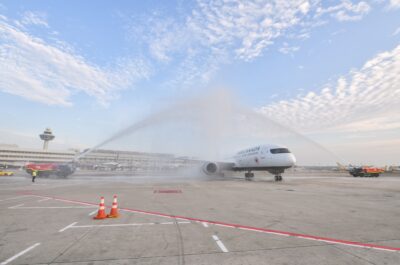
Air Canada launches non-stop Singapore to Vancouver route

Travelex launches click-and-collect currency service in Hong Kong

MICHELIN Guide Thailand expands to Chon Buri: A culinary adventure by the sea

Southeast Asia’s tourism revival in 2023: Which country is leading the international arrivals
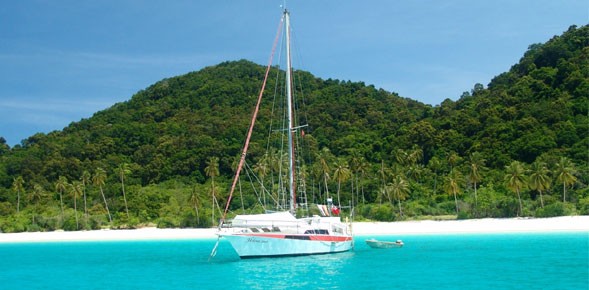
Southeast Asia’s tourism sector in 2023 witnessed significant growth, with Thailand and Vietnam among the key contributors. The region displayed a strong post-pandemic resurgence, marked by increased international tourist arrivals.
The tourism industry in Southeast Asia experienced a robust recovery in 2023, with international arrivals, aviation, and hospitality sectors showing promising trends. This positive outlook is a result of the strong performance in 2022 and the continued efforts of Southeast Asian governments to boost visitor arrivals. Key developments include enhanced connectivity for tourism, such as the ASEAN Framework Agreement on the Facilitation of Cross Border Transport of Passengers by Road Vehicles, which aims to streamline cross-border movement of tourists and promote over-land travel between ASEAN states. Additionally, collaborations like the Lancang Mekong Tourist Cities Cooperation Alliance , involving Cambodia, Lao PDR, Myanmar, Thailand, Vietnam, and China, are indicative of a regional approach to tourism development.
Malaysia led the region with the highest number of foreign tourist arrivals, recording approximately 26 million visitors from January to November. Thailand followed closely, welcoming around 24.6 million tourists during the same period.
Vietnam also saw a notable number of international visitors, with the country hosting 12.6 million foreign tourists over the year. This figure, while substantial, was still around 70% of the pre-pandemic levels. The country’s main source of tourists included South Korea, mainland China, Taiwan, the U.S., and Japan.
The recovery rates of tourism in Southeast Asia varied across countries. Cambodia demonstrated an outstanding recovery, nearly achieving full recovery with a rate of 92.48%. Vietnam and Indonesia also showed strong recovery rates at 82.25% and 74.11%, respectively.
Southeast Asia offers a rich tapestry of experiences for travelers. In Vietnam, tourists can enjoy cultural activities like exploring the old quarter of Hanoi, meeting local craftsmen, and touring historic sites like the Cu Chi tunnels. Thailand provides diverse itineraries, combining sights like Bangkok’s vibrant city life, Chiang Mai’s mountains, and Kanchanaburi’s lush nature. Cambodia offers unique experiences from exploring the Angkor temples to visiting its southern beaches. These destinations are not just about sightseeing; they offer immersive cultural experiences, including the exploration of iconic movie sets and engagement in local arts and handicrafts.
The tourism trends in Southeast Asia are evolving, with a growing interest in wellness and nature trips. This shift reflects a post-pandemic change in tourist preferences, where people are increasingly seeking wellness or outdoor experiences. For instance, in Vietnam, the Avana Retreat provides a blend of wellness services, including yoga classes, spa treatments, nature walks, and local culture tours. This trend aligns with the global emphasis on mental health and well-being, positioning Southeast Asia as a top wellness destination.
The reopening of China ‘s borders is expected to significantly contribute to the recovery of the tourism sector in Southeast Asia. The anticipation of Chinese tourists returning to the region is high, and airlines are preparing to restore and increase flight connections. This development is particularly notable given the International Monetary Fund’s prediction of a strong recovery for Southeast Asia in 2023, despite a dimming global economy. The rise in vaccination rates and a desire to revive hospitality and travel to pre-pandemic levels are expected to increase competitiveness in the region to attract key international tourist markets. Furthermore, technological advancements like VR destination simulators, AI-based personalized travel accommodations, and metasearch engines are poised to enhance the travel experience and provide a competitive edge in the evolving tourism landscape.

Vicky Karantzavelou
Vicky is the co-founder of TravelDailyNews Media Network where she is the Editor-in Chief. She is also responsible for the daily operation and the financial policy. She holds a Bachelor's degree in Tourism Business Administration from the Technical University of Athens and a Master in Business Administration (MBA) from the University of Wales. She has many years of both academic and industrial experience within the travel industry. She has written/edited numerous articles in various tourism magazines.
- Vicky Karantzavelou https://www.traveldailynews.asia/author/vicky-karantzavelou/ AirAsia X launches direct Kuala Lumpur-Xi’an flight with full capacity
- Vicky Karantzavelou https://www.traveldailynews.asia/author/vicky-karantzavelou/ Cordis, Foshan: New upscale hotel opens in China's Greater Bay Area
- Vicky Karantzavelou https://www.traveldailynews.asia/author/vicky-karantzavelou/ Air Canada launches non-stop Singapore to Vancouver route
- Vicky Karantzavelou https://www.traveldailynews.asia/author/vicky-karantzavelou/ Fusion Hotel Group launches first Fusion Suites in Thailand
Related posts
Previous article, next article, media evolution 2024: social media decline, ai fatigue, and journalism's crisis, hungry hub expands global reach through supply partnership with leading online travel agencies and activities platform.


HoSkar Bangkok
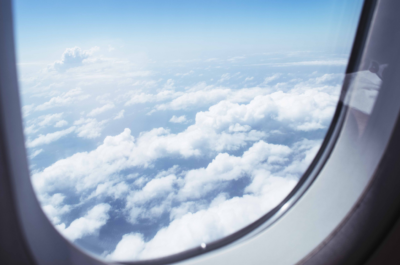
Indonesia implements strict airfare regulation ahead of Eid exodus

Philippines and Austria strengthen tourism ties for mutual growth

IHG announces second voco property in Seoul, expanding in South Korea
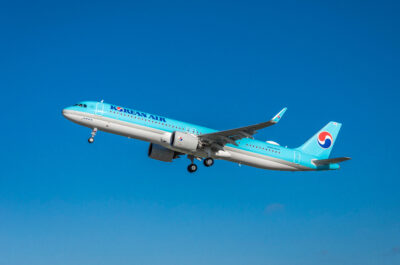
Korean Air launches seasonal flights to Taichung from Seoul
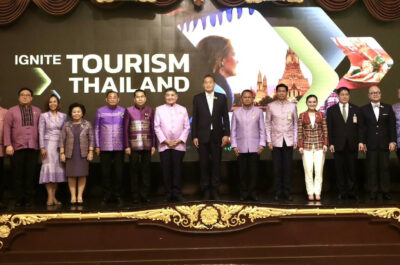
Thailand’s Vision 2025: A multifaceted approach to ignite tourism
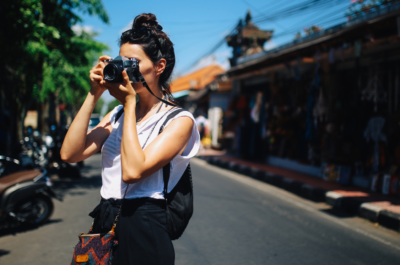
Indonesia enhances tourist safety with evacuation zones for Eid holidays

Changshu launches culture and tourism festival with Peony celebrations

Fusion Hotel Group launches first Fusion Suites in Thailand

Pallavi Sharma appointed as the new Front Office Manager at Novotel Hyderabad
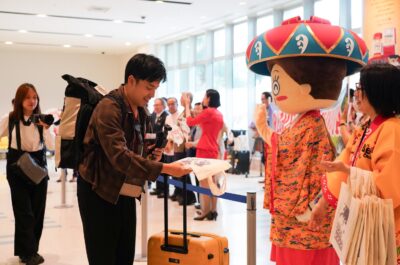
Thai AirAsia launches new direct flights from Bangkok to Okinawa

Taiwan’s strongest earthquake in 25 years shakes the travel industry

Philippines eyes sustained tourism growth, gits 1.2m international visitors in early 2024
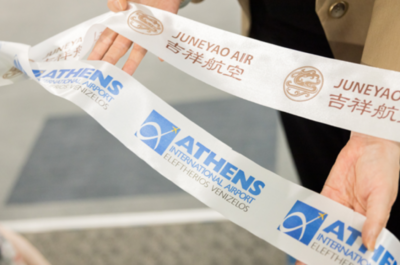
Juneyao Air launches first direct Shanghai to Athens flight, expanding global reach

ICC Sydney launches Disability Inclusion Action Plan on World Autism Awareness Day

Alipay+ connects two million merchants in Japan, bolstering cherry blossom season
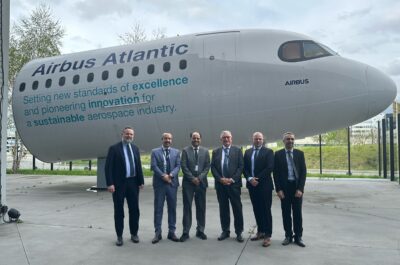
Mahindra Aerostructures and Airbus Atlantic ink $100m contract
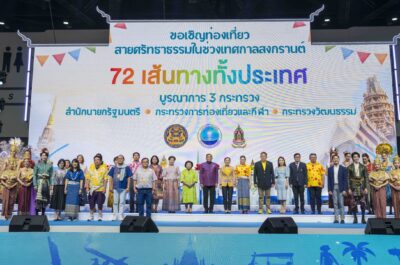
Bangkok launches Maha Songkran World Water Festival 2024 for Thai New Year
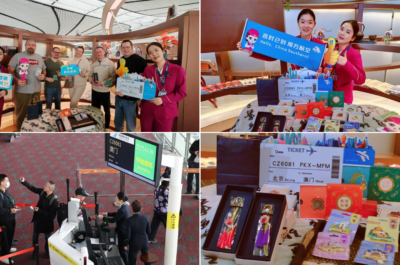
China Southern Airlines launched new Beijing Daxing-Macao flight route

Radisson Hotel Group debuts first Radisson RED in Laos
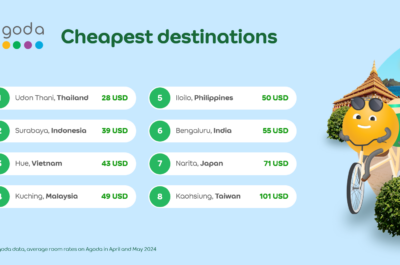
Agoda reveals Asia’s cheapest destinations for upcoming holidays
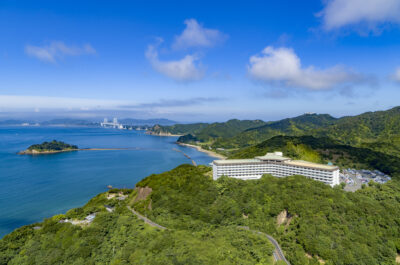
Accor doubles presence in Japan with 22 new hotels opening

New $6 million funding boost for Indigenous Tourism in the Northern Territory

The Isan Project launches ‘Flowers of Thailand’ video, encouraging tourists to discover Thailand’s hidden gems

ONYX Hospitality Group expands Shama Brand with new launch in Rayong

TAT launches ‘Air-mazing Thailand’ to boost the country as Asia-Pacific aviation hub

Ascott Limited’s Strategic Vision for Tourism Growth in the Philippines: Insights from Loven Ramos

Club Med hosts first global event in Lijiang, showcasing China’s rich culture and scenic beauty

Trip.com Group and Capital A Berhad forge expanded partnership, enhancing travel offerings
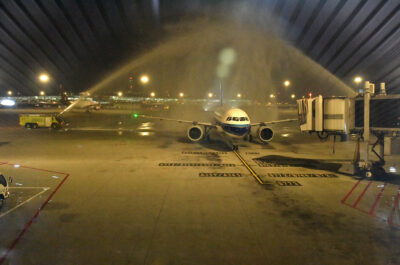
Malaysia welcomes new direct flights from Chengdu and Shenzhen, aims to boost Chinese tourism

Pedals and Pathways: Unveiling the Rise of Cycling Tourism in Southeast Asia
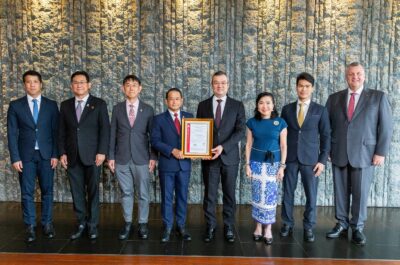
Centara Hotels and Resorts earns GSTC certification for sustainable tourism

Live Webinar: Climate Change Impact on Destination Reputation
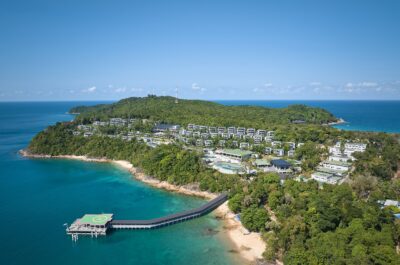
Perhentian Marriott Resort opens in Malaysia’s Terengganu
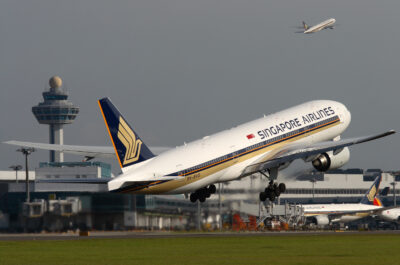
Singapore Airlines restores full service at Perth with four daily flights

Preferred Hotels & Resorts bolsters South Asia team with strategic sales appointments
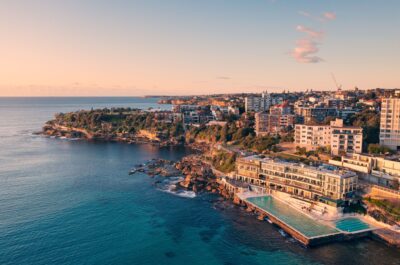
NSW shatters tourism records with $51.4 billion visitor contribution in 2023

Mercure Hyderabad KCP welcomes Suraj Kumar Gupta as the new Front Office Manager

PATA now accepting submissions for prestigious “Face of the Future Award” 2024

Embracing Slow Travel and Slow Food: Pioneering Sustainable and Meaningful Tourism
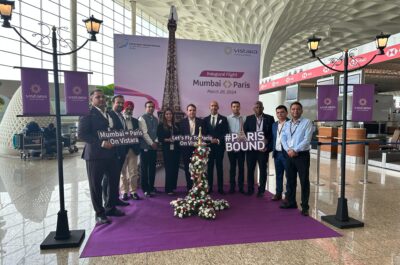
Vistara non-stop flights between Mumbai-Paris started on 28 March

Cambodia’s tranquil retreat Full Moon Island Resort on Koh Ampil
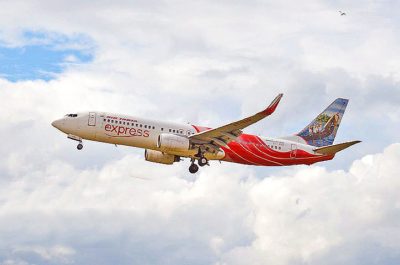
Air India Express expands operations to strengthen Kerala-Muscat air corridor

Chatrium Residence Sathon welcomed Michelin-starred talent to lead Albricias

Ant Int. and Capital A Berhad forge strategic collaboration to boost digitalization and sustainability

Accor’s PM&E division announced six new projects across Asia in Q1 2024
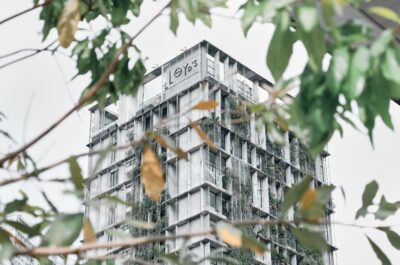
Lloyd’s Inn Kuala Lumpur opens today
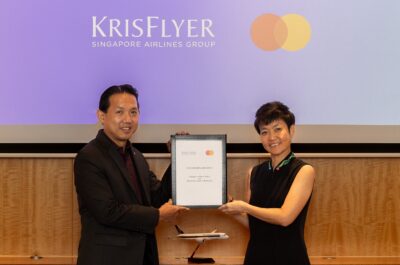
Mastercard and Singapore Airlines forge strategic partnership for Southeast Asia
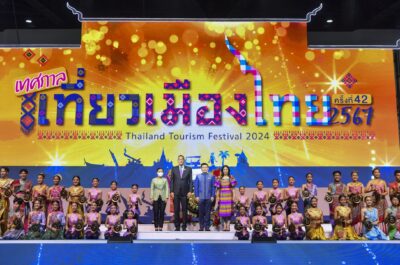
Thailand unveils 42nd Tourism Festival with Prime Minister’s vision

SOTC Travel partners with Mumbai Indians for T20 season

Seatrade Cruise Asia and Crew Connect Global co-locate in Manila
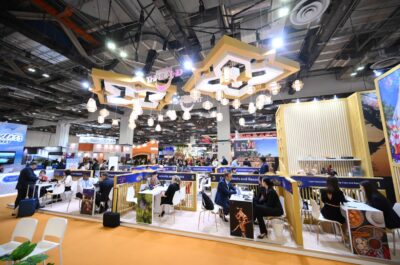
ITB Asia 2024

Empowering Women Through Tourism: Insights from ADB’s Gender Specialist Chieko Yokota

Bumrungrad International Hospital: Pioneering Healthcare Excellence in Southeast Asia

Taiwan’s Taitung targets South Korean tourists with unique promotional event

Canberra shatters tourism records: 5.8 million visitors inject $3.8 billion

Hotel industry in India to see sustained growth into FY25, CareEdge predicts
Itb asia 2024 in singapore: uniting the travel industry’s finest.

Banyan Group and Urasaya Property launch Banyan Tree Residences Sichon

DUDigital Global appoints industry veteran Manoj Dharmani as the new CEO

UFC 305 to elevate Perth as premier sports tourism destination in 2024

Courtyard by Marriott debuts in Phuket, elevating Patong beach resort experience

Trip.com’s 3.3 mega sale triumphs: Sets new global trends in travel deals

Spring blossoms attract throngs to Zaozhuang’s scenic splendors

Sexual health through the decades: A bumpy ride through time
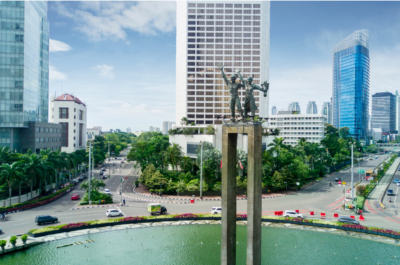
Indonesia unveils first water museum at 2024 World Water Forum
Text: A A A Print Business
Visa-free travel boosts southeast asian tourism.
Industry bounces back from slump, with Chinese spending habits driving growth
An influx of Chinese travelers in the past few months has enabled Southeast Asia's tourism industry to recover from the pandemic-induced slump, analysts say.
While China has long been one of the key travel markets for members of the Association of Southeast Asian Nations, decisions made by Singapore, Malaysia and Thailand last year to waive entry requirements for Chinese tourists bolstered tourism receipts in the first two months of this year.
Visa-free access for Chinese tourists is a "facilitating factor" in boosting ASEAN tourism industry receipts, said John Paolo Rivera, associate director of the Dr Andrew L. Tan Center for Tourism at the Asian Institute of Management in the Philippines.
Chinese tourists are the biggest spenders among travelers in Southeast Asia, Rivera said.
"Alongside the volume of Chinese tourists, the Chinese spending habit has driven consumption spending and the tourism contribution to GDP" in Southeast Asia, he said, noting tourist spending has helped the ASEAN travel industry to recover from losses posted during the pandemic.
Chinese tourists' spending has perhaps created the biggest influence on Singapore.
Official figures showed international visitor arrivals in the city-state reached 13.6 million last year, with China among the top three source markets. Tourism receipts reached $15 billion in the first nine months last year, and Chinese tourists were the biggest spenders with their total receipts hitting more than $1.7 billion, the Singapore Tourism Board said.
Flight connectivity
The board expects the tourism sector's recovery to continue this year through improved global flight connectivity and the implementation of the mutual 30-day visa-free travel between China and Singapore that started on Feb 9.
Yu Hong, a senior research fellow at the East Asian Institute of the National University of Singapore, said the mutual visa-free agreement has boosted the number of Chinese visitors to Singapore, especially during Spring Festival.
Singapore has always been a popular destination among Chinese tourists because of its geographical proximity, cultural similarities and the presence of many direct flights to and from Chinese cities, Yu said.
In Malaysia, officials welcomed passengers aboard China Eastern Airlines' inaugural flight on March 16 from Kunming in Yunnan province to the Malaysian capital Kuala Lumpur.
Manoharan Periasamy, director-general of the Malaysian Tourism Promotion Board, said in a statement that this new route provides a "great opportunity" to bring in more Chinese tourists, especially after the visa-free policy took effect on Dec 1.
This year, Malaysia is eyeing 27.3 million international tourist arrivals, with 5 million expected to come from China.
Meanwhile, 3.96 million foreign tourists arrived in Thailand from Jan 1 to Feb 8, with those from China topping the list with 730,747 visitors, Thai government spokesman Chai Wacharonke was quoted in media reports as saying.
On March 1, the number of Chinese tourists to Thailand was up more than 30 percent compared with the corresponding period a year earlier, according to the online travel agency Trip.com, Xinhua News Agency reported.
Qin Jing, vice-president of Trip.com Group, said the implementation of mutual visa exemption in March holds significantly positive implications for the growth of tourism in both countries.

Related news
Visa-free travel boosts tourism for China, Southeast Asian countries
China to expand visa-free travel to more countries, seeking further exemptions: FM
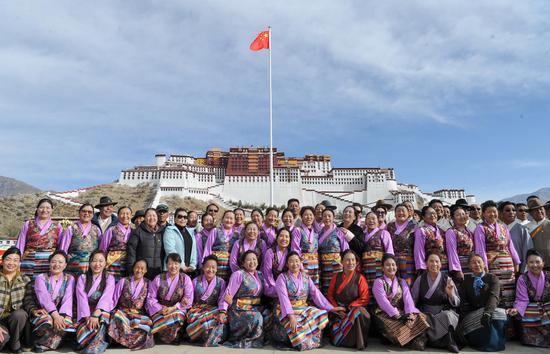
Serfs' Emancipation Day celebrated in Xizang
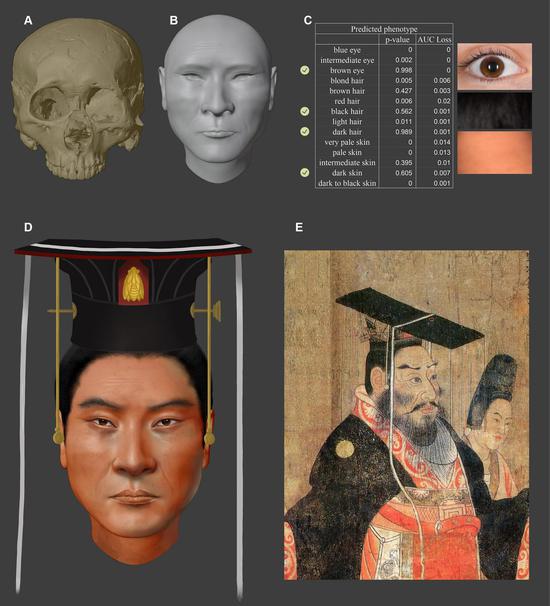
Appearance of Chinese emperor from 1,500 years ago revealed

Magnificent scenery of Qiantang River tidal bore in Zhejiang
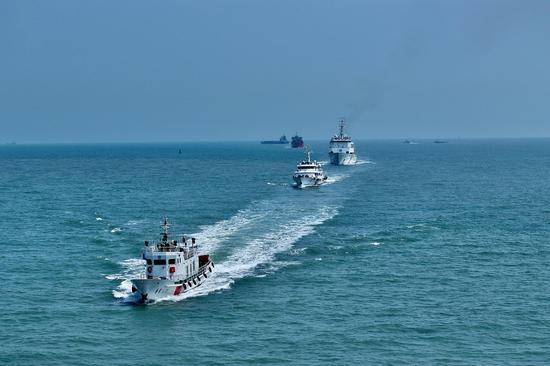
Marine authorities conduct joint patrol mission in waters of Taiwan Strait

2024 New York International Auto Show kicks off
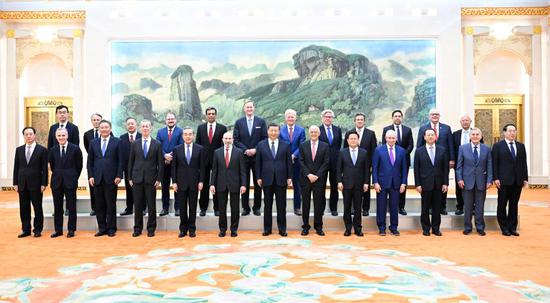
Xi meets U.S. guests
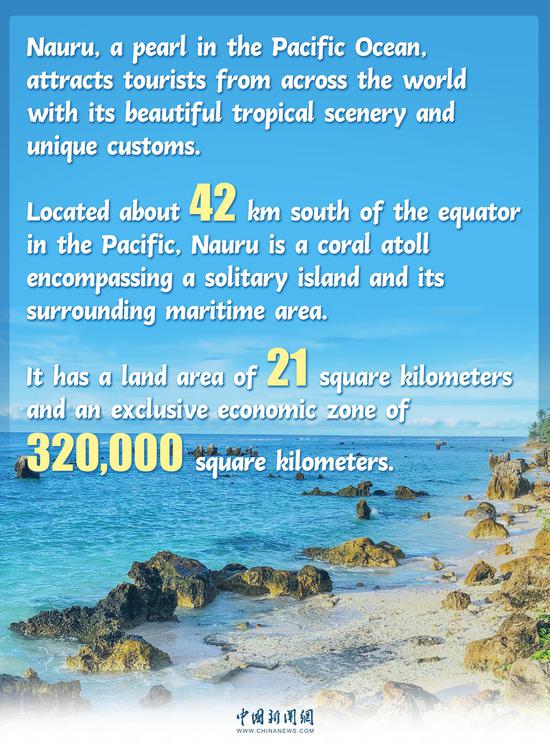
Culture Fact: Things you must know about Nauru
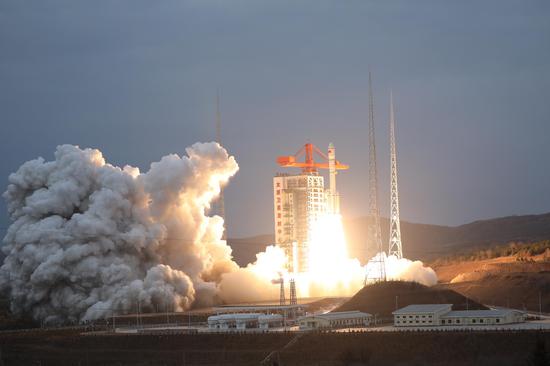
China sends Yunhai-3 02 satellite into space
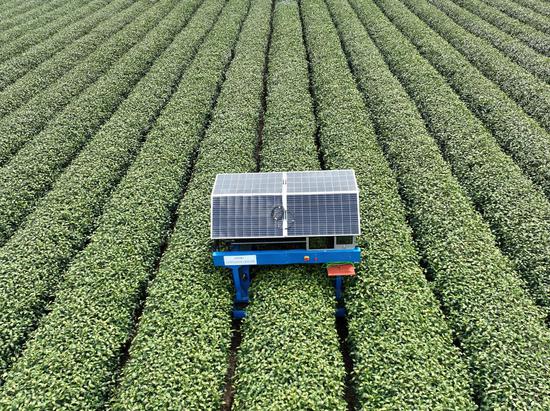
Tea picking robot operates in harvest season
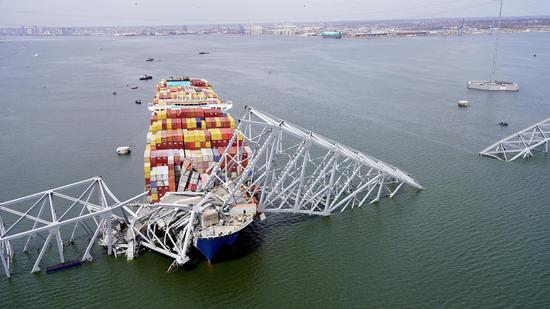
Baltimore bridge taken down by cargo ship
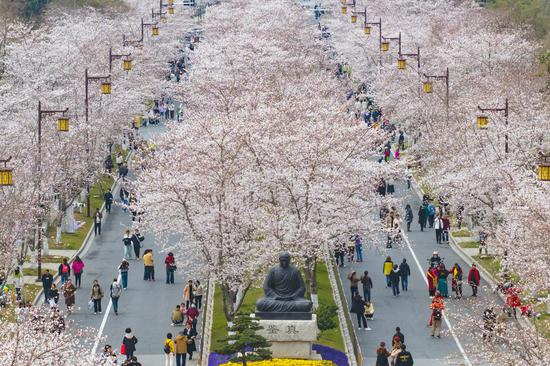
Ancient city adorned with blooming cherry blossoms

In Numbers: China and Dominica celebrate 20 years of diplomatic ties
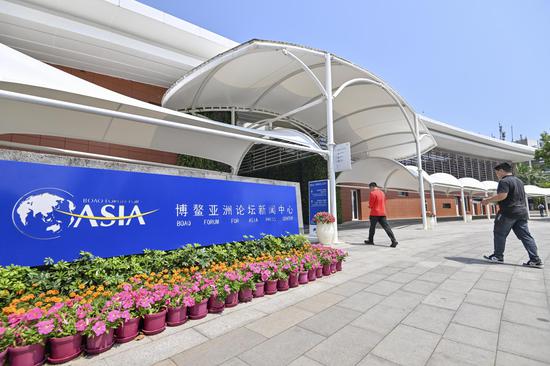
Media center of Boao Forum for Asia Annual Conference 2024 opens
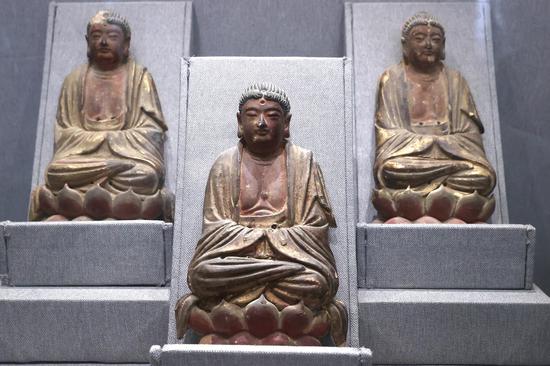
30 Buddhist relics donated to Chinese Mainland

Electromagnetic storms spur auroras in 'China's cold pole'
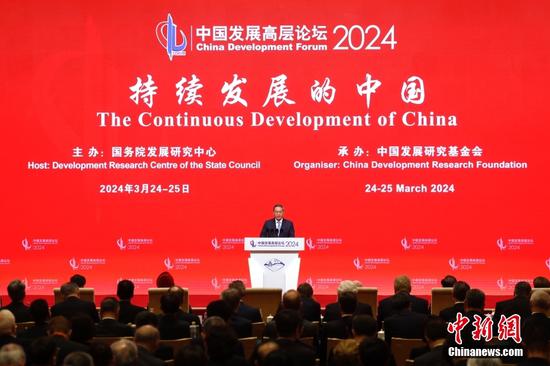
China Development Forum 2024 opens in Beijing
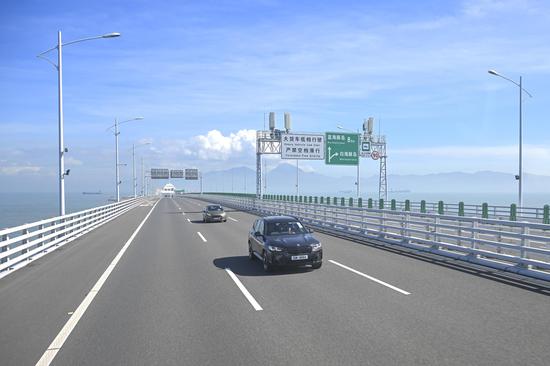
2 mln private vehicles pass through Hong Kong-Zhuhai-Macao Bridge
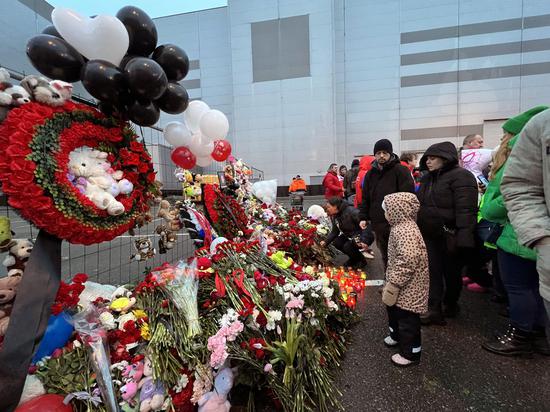
Russia mourns victims of deadly terrorist attack
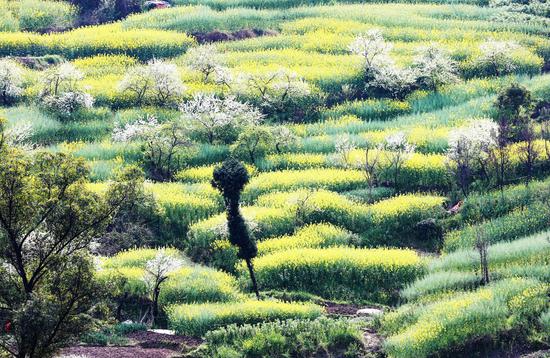
Blooming cole flowers create water-painting scene in Sichuan
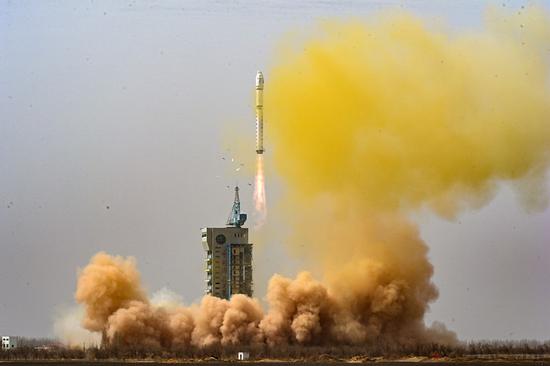
China's space environment monitoring satellites sent into space

China's first self-developed hydrogen-powered urban train completes test run
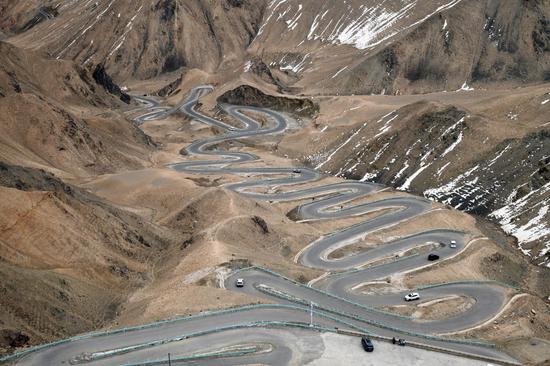
Zigzag Panlong road reopens to traffic after seasonal hibernation

Salt lake in Shandong resembles giant palette
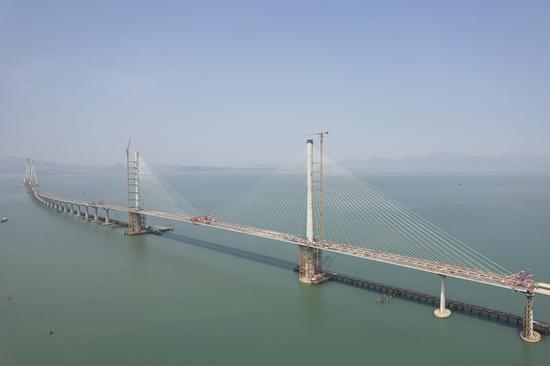
Gaolangang Bridge of Huangmaohai cross-sea passage connected in S China
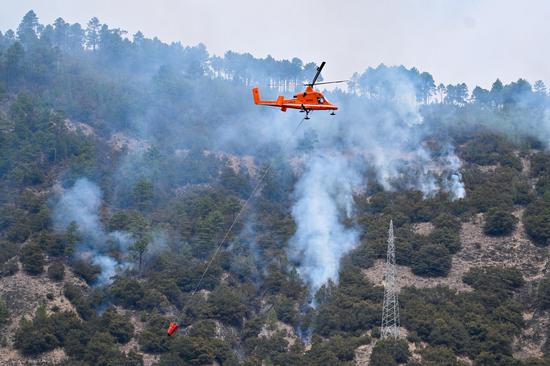
China dispatches aircraft to combat forest fire in Yunnan
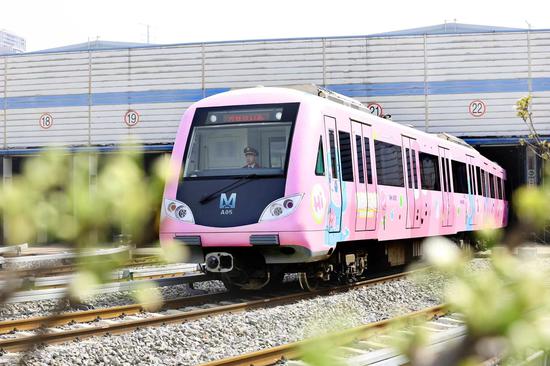
Pink subway trains run to spring

A timeline of major Boeing aircraft accidents
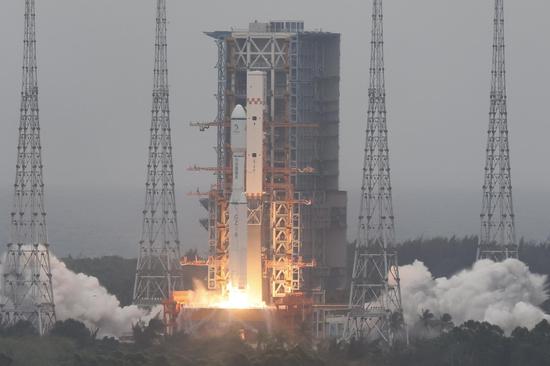
China launches relay satellite Queqiao 2

China first zero-carbon data center reduce annual carbon emissions by more than 300,000 tons
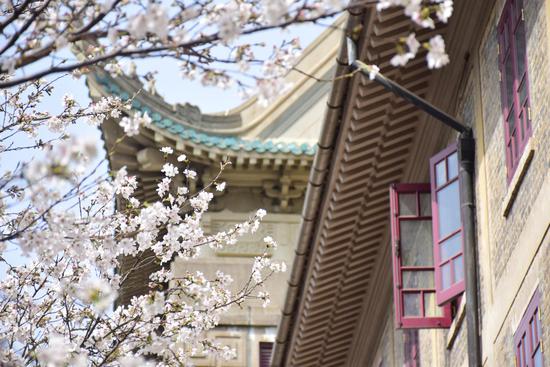
Cherry blossoms in Wuhan University enter best viewing season
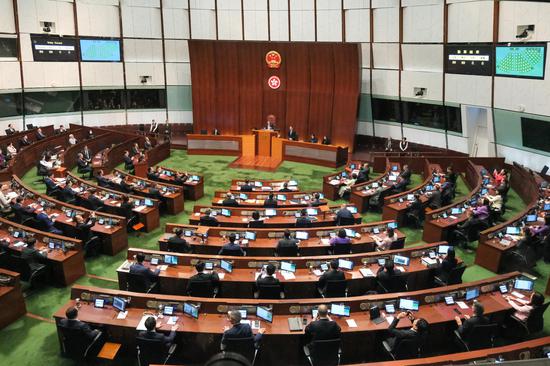
HKSAR LegCo unanimously passes national security bill

4th China Cross-border E-commerce Trade Fair kicks off in Fujian
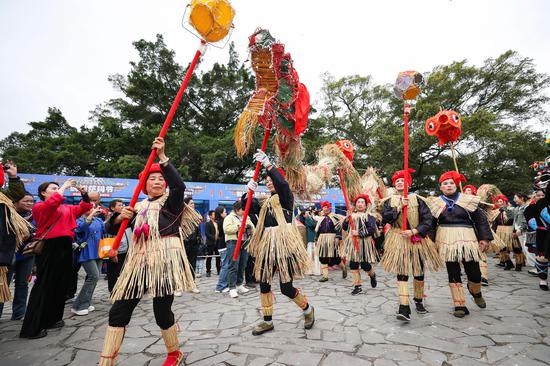
Sama Festival celebrated in Guizhou
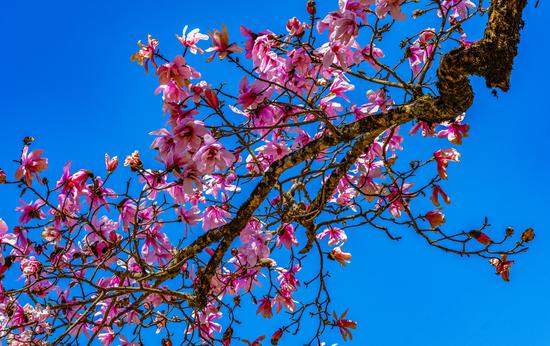
600-year-old magnolia tree blossoms in Sichuan

Three snow leopards captured by camera in Qinghai

China ready to launch relay satellite Queqiao 2
Most popular in 24h, more top news.
- Manufacturing PMI expands in March
- KMT's Ma visiting mainland
- China's factory activity returns to expansion
- Suspects detained after death of 5-year-old in Shandong
- Indonesia's president-elect to visit China
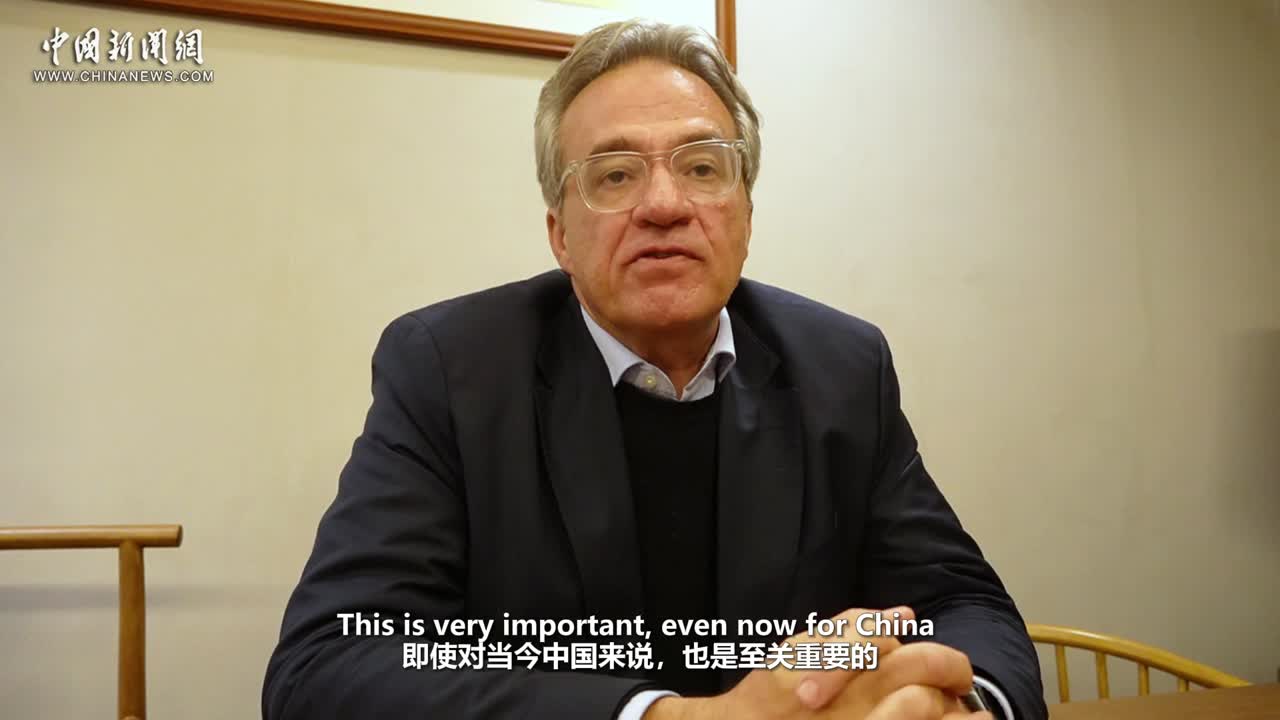
Insights | Peaceful nature of Chinese civilization holds significant contemporary value: Spanish scholar

Seeing is believing: Chinese expert debunks 'Peak China' rhetoric

- Insights & Resources
View Cart Checkout
- No products in the cart.
Subtotal: 0 ₫
- Data Capture
- SEA tourism performance in July…
SEA tourism performance in July 2023: Growth across the region for the first time
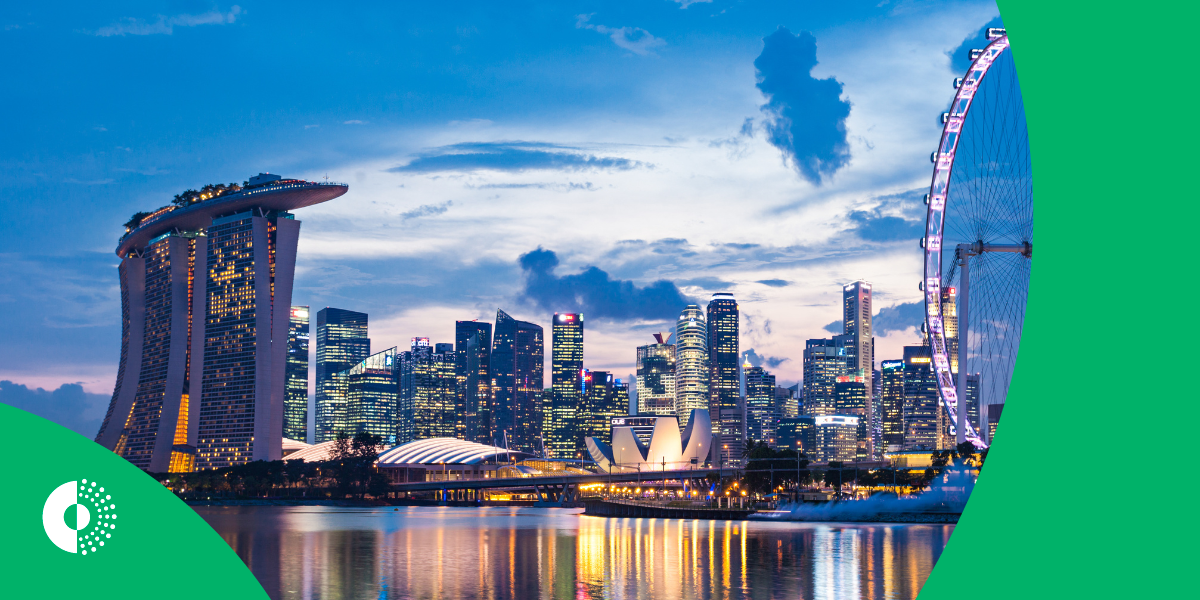
Tourism in Southeast Asia continued its recovery in July 2023, with all countries in the region reporting positive growth. For the first time, the region is experiencing growth across the board. International tourist arrivals increased by 12.31%, from 6,273,312 to 7,045,482 arrivals.
In terms of leading positions in categories, there are not many changes. Thailand remains the top destination for international tourists in Southeast Asia. Cambodia is the country with the highest recovery rate in the region. And Vietnam is the country with the highest target completion rate as of July 2023.
Recovery and Tourism Target Rate
As of July, Cambodia had an impressive recovery index and was close to achieving full recovery with 91.4%. Vietnam held the second place with a recovery rate of 78.93%, closely followed by Singapore at 78.87%.
In terms of achieving their 2023 target, Vietnam led with a completion rate of 82.67%, welcoming a total of 6.6 million international arrivals. However, despite being the most visited country with over 15 million arrivals, Thailand had the lowest target completion rate in the region at only 51.35%. Singapore, the second most visited country with 7.7 million arrivals, had the second lowest target completion rate at just 55%. Given the contrast, the pressing question that emerges is: should the country celebrate upon reaching the highest target, or should it take a moment to pause and engage in deeper reflection among the tourism performance compared to other countries?
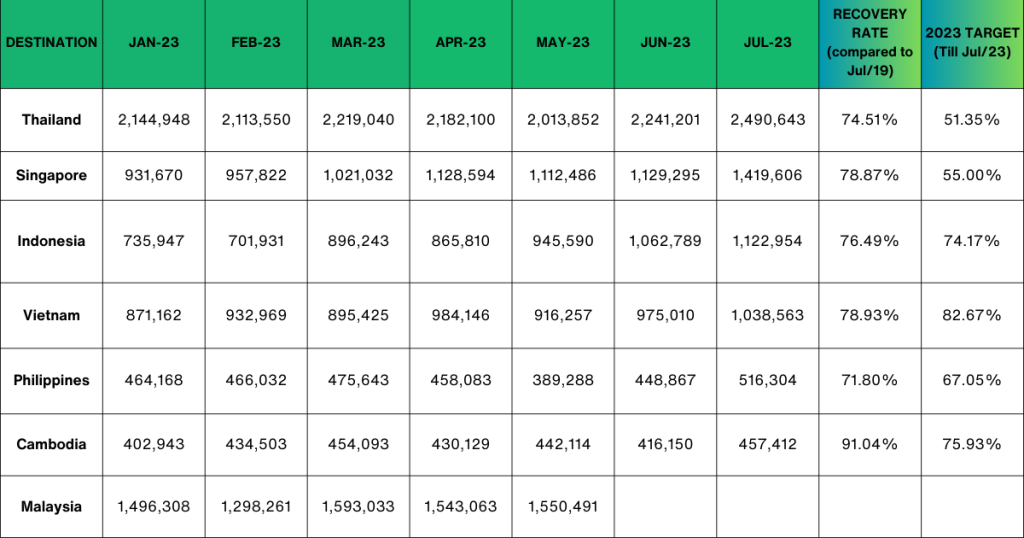
Here are some highlights
Top 3 Southeast Asian destinations with the largest numbers of international arrivals in July 2023:
Thailand: Welcomed 2,490,643 international arrivals and achieved its highest growth rate of the year at 10%. Singapore: Welcomed 1,419,606 international arrivals and achieved the highest growth rate in the region at 25% compared to last month. Indonesia: Welcomed 1,122,954 international arrivals and achieved a growth rate of 5% for two consecutive months.
In terms of recovery rate:
Cambodia: Achieved a recovery rate of 91.04% Vietnam: Achieved a recovery rate of 78.93% Singapore: Achieved a recovery rate of 78.87%\
In terms of Aviation Sector:
In the aviation sector , Indonesia continues to hold the largest capacity in Southeast Asia, accounting for 29% of the region’s capacity with 10.7 million seats. Vietnam follows as the second largest, offering 6.7 million seats in August 2023, which is 18% of the region’s capacity, despite a 6% decline from July 2023. Thailand ranks third with 6.3 million seats, making up 17% of the region’s capacity, marking a 3% increase from the previous month.
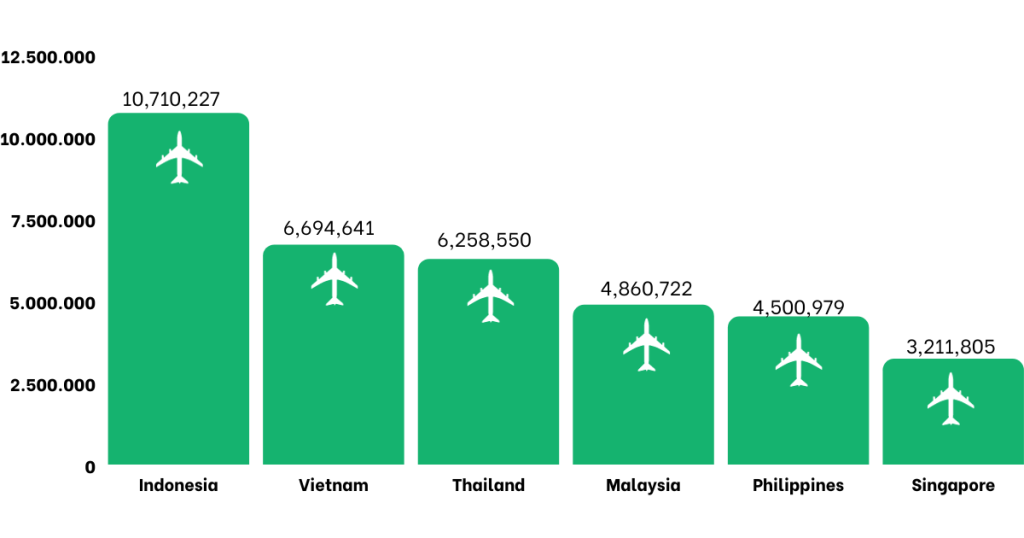
When it comes to domestic flights , the Hanoi (HAN) to Ho Chi Minh City (SGN) route remains the most popular in Southeast Asia with 978k seats, even with a decrease of 2% from July 2023. The top ten domestic routes in the region remain unchanged, half of which are internal flights within Indonesia. The route from Jakarta to Surabaya saw the most significant growth in capacity, increasing by 18% compared to July 2023.
In terms of international flights , Singapore maintains its position as a key hub in Southeast Asia, with seven out of the top ten international routes either starting or ending in Singapore. The busiest route remains Kuala Lumpur (KUL) to Singapore (SIN) with 408k seats. The top four international routes involve Singapore and other major regional hub airports – Kuala Lumpur (KUL), Jakarta (CGK), Bangkok (BKK), and Denpasar-Bali (DPS).
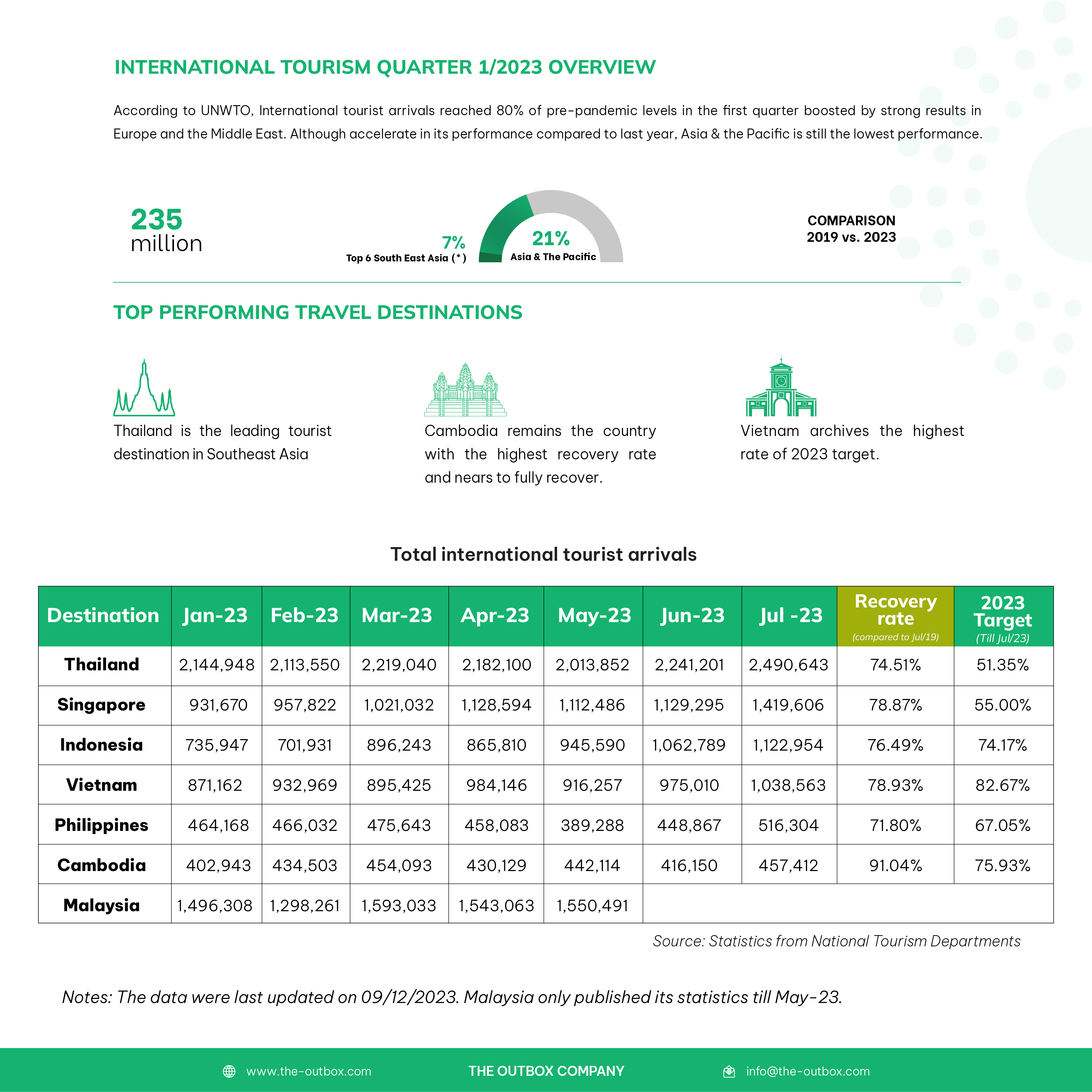
Related Posts
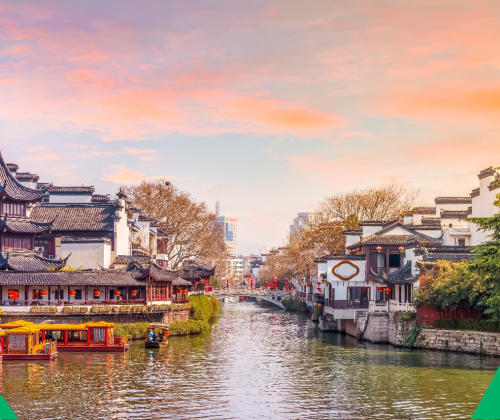
Be Inspired. Subscribe.
- Sustainability
- Latest News
- News Reports
- Documentaries & Shows
- TV Schedule
- CNA938 Live
- Radio Schedule
- Singapore Parliament
- Mental Health
- Interactives
- Entertainment
- Style & Beauty
- Experiences
- Remarkable Living
- Send us a news tip
- Events & Partnerships
- Business Blueprint
- Health Matters
- The Asian Traveller
Trending Topics
Follow our news, recent searches, hong kong february retail sales rise 1.9% as tourism extends recovery, advertisement.
Mainland Chinese travellers on low-cost tours walk to a tourist bus after lunch at To Kwa Wan in Hong Kong, China March 30, 2023. REUTERS/Tyrone Siu/File Photo
HONG KONG: Hong Kong's retail sales rose for the 15th straight month in February boosted by continuing growth in tourism and consumption, official data showed on Wednesday (Apr 3).
Sales in February rose 1.9 per cent from a year earlier to HK$33.8 billion (US$4.32 billion), the Hong Kong government said. That compared with 0.9 per cent growth in January, 7.8 per cent rise in December and 15.9 per cent jump in November.
"As handling capacity continues to recover and more mega events are staged, inbound tourism is expected to revive further and benefit the retail sector," a government spokesman said.
The government's initiatives in boosting consumption sentiment should also provide support, the spokesman added.
In terms of volume, retail sales increased 0.5 per cent in February. That compared with January's 1.2 per cent fall, the first decline in volume terms since December 2022, when it slipped 0.6 per cent. It grew 4.8 per cent in December 2023 and was up 12.4 per cent in November.
Hong Kong's economy is expected to grow 2.5 per cent to 3.5 per cent this year after expanding 3.2 per cent in 2023 as the city struggles to revive its economy following the COVID-19 pandemic while battling mounting deficits and economic headwinds.
The government plans to roll out support measures of more than HK$1 billion (US$127 million) for the beleaguered tourism industry, staging more than 80 "mega-events" such as fireworks and drone shows in the year's first half to lure visitors.
Chinese cities of Xian and Qingdao also joined a travel scheme allowing residents to make personal visits to Hong Kong, rather than in tour groups. The scheme took effect from March 6, taking to 51 the total of Chinese cities whose residents are eligible to apply for individual travel.
February visitor arrivals stood at 4.0 million, data from the Hong Kong Tourism Board showed. That compared with 3.83 million in January and 1.46 million in February 2023.
The number of mainland Chinese visitors rose to 3.25 million in February from January's 2.98 million, December's 2.94 million and 1.11 million in February 2023.
Sales of jewellery, watches, clocks and valuable gifts, bought mostly by mainland tourists before the pandemic, fell 3.6 per cent in February on year after 22.8 per cent growth in January, data showed.
Sales of clothing, footwear and accessories grew 12.3 per cent in February after an increase of 2.7 per cent in January.
Related Topics
Also worth reading, this browser is no longer supported.
We know it's a hassle to switch browsers but we want your experience with CNA to be fast, secure and the best it can possibly be.
To continue, upgrade to a supported browser or, for the finest experience, download the mobile app.
Upgraded but still having issues? Contact us
We've detected unusual activity from your computer network
To continue, please click the box below to let us know you're not a robot.
Why did this happen?
Please make sure your browser supports JavaScript and cookies and that you are not blocking them from loading. For more information you can review our Terms of Service and Cookie Policy .
For inquiries related to this message please contact our support team and provide the reference ID below.
- Philippines
- South Korea
- The Maldives
- Appointments
- Trade Calendar
- News Archive
- Print Edition
Friendly visa policy for the Chinese key to recovery: Philippine tourism officer
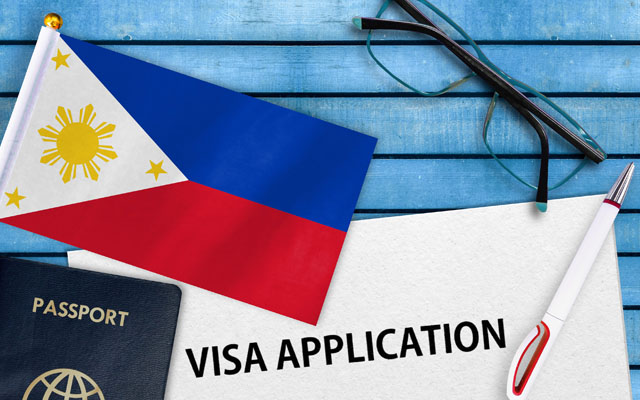
Liberalising visa policy, like what many destinations have done, will help the Philippines bring back the Chinese market which had reduced sharply in recent years, opined Rene Reyes, tourism attaché at the Philippine Tourism Office Shanghai, adding that a visa upon arrival “will surely help us to attract more Chinese visitors”.
Destinations that reinstated friendly visa policies, including e-visa and visa-on-arrival, have benefitted from a faster tourism recovery rate compared to others.
Reyes pointed out that countries like Singapore, Malaysia and Thailand had already offered visa-free entry for Chinese tourists, while the Chinese government had eased up flight permits.
In mid-2023, the Philippines trialled an e-visa facility for Chinese nationals and had plans to implement it for the Indian market later that year. However, the latter is now halted for improvements and no date has been set for its resumption.
China is the Philippines’ second top tourist market, with a record 1.7 million visitors in 2019, dropping to 263,836 in 2023 according to the Department of Tourism statistics.
In the first two months of this year, tourists from China reached 85,876 or 6.99 per cent of the total foreign arrivals, a far third from top source market South Korea with 28.50 per cent market share and the US with 15.93 per cent.
Last year, the Philippines hosted certain business events with a delegation from China among them: World Food Expo in Manila, Cebu and Davao; Silkroad Philippines 2023: The Best of China at the World Trade Center Metro Manila; PackPrintPlas Philippines 2023 at SMX Convention Center; Philippines Apparel and Textile Show, Philippines Sports Show and The Asia International E-commerce Expo at SMX Convention Center Manila.
Reyes said: “(The) China market will remain the biggest outbound market in the world and this will also be true for the MICE industry. (Recovery) may be slow now – especially for the incentive travel, which was big before – but this will soon pick up and we need to prepare for this.”

Discover the wonders of Japan with BWH Hotels
Digital transformation at every stage with STB’s Tcube

Advertise with us

Is Your Business Listed On TTGmice Planner Online?

Future of Tourism: Digital Travel APAC 2023 Innovation Brief
RELATED ARTICLES
Strong 2023 performance powers club med’s 2024 growth ambitions, opportunities abound for brands as travel rebounds in asia-pacific, philippine’s bohol takes action to protect natural heritage, ready to welcome all, malaysia anticipates healthy numbers from indian travellers this summer, interest in cambodia high among european travellers, island hop in the philippines with contiki, didatravel, visit oman to boost china outbound to oman, european tourists lifts tourism in southern thailand, tried and tested.

Winter wonders in Kiroro

Upgrade your stay at Dorsett Hartamas Kuala Lumpur
What to buy now.

World of Sanrio arrives at Macau’s Studio City

- TTG Travel Awards
- Privacy Policy
- Terms of Use

All Rights Reserved
Jetstar Asia announces direct flights from Broome to Singapore, promises low airfares
Jetstar Asia has this morning announced direct flights between Broome and Singapore, reconnecting Western Australia's north to the bustling south-east Asian hub.
The Singapore carrier today launched its new route with the seasonal service set to begin operation on June 25.
It will offer two return flights each week until October 26.
Flights from Broome to Singapore through Silk Air were previously launched in 2018 , at a time when the state's tourism industry had experienced a drop in spending from overseas visitors.
Last year, the Broome International Airport sought federal government support to recommence the flights between the Kimberley and Singapore.
The primary barrier to run the international flights was approval to establish permanent, regular border services at the site.
Broome will be reconnected with Changi International Airport, which will expand the hub's network to eight Australian cities.
Tickets for the new route will be on sale today, including special one-way fares starting at $145, with the flights to recommence in April next year.
Hopes to boost WA's international visitors
WA tourism minister Rita Saffioti said the new flight link would expand the state's aviation capacity through the gateway to Asia.
"This Singapore to Broome service presents an incredible opportunity to turbocharge international visitor numbers to Australia's north west, and inject millions into the region's accommodation, hospitality and tourism businesses," she said.
Broome International Airport chief executive Craig Shaw said the direct flights would bring the outback town closer to the rest of the world and recognised the region's desirability as a visitor destination.
"International connections to Broome as the gateway to the Kimberley region have been a long-held ambition for the local tourism industry and the airport," he said.
"As well as being a game changer for the region in terms of tourism, this new regular connection can support new trade opportunities from the north-west of Australia.
"Connectivity is the key to prosperity and livability for any town."
Jetstar Asia chief executive John Simeone thanked the state government and Broome International Airport for their collaboration and said the route would provide an "incredible" travel experience for visitors.
"Just over four hours away from Singapore, Broome is an amazing destination for those looking for a holiday of a lifetime," he said.
ABC Kimberley — local news in your inbox
- X (formerly Twitter)
Related Stories
High hopes new airline will drive down fares, increase competition in wa and nt.
Remote WA town becomes new gateway to Asia with direct flights
- Air Transport Industry
- Tourism and Leisure Industry
- Travel and Tourism (Lifestyle and Leisure)

IMAGES
COMMENTS
Credit: Depositphotos. Before the COVID-19 pandemic, the tourism industry across Southeast Asia was booming. In 2019, the Philippines received 8.2 million foreign visitors, Indonesia 16.1 million ...
Increasing travel activity in 2023 from Asia Pacific countries is helping. In 2019, China was the top visitor market for the 10 countries of South East Asia, contributing 22.5 percent of all visitors. South Korea ranked 4 th, Japan 7 th, Australia 11 th, Taiwan 15 th and Hong Kong 23 rd. Four of South East Asia's top 10 visitor markets were ...
Travel and tourism in Southeast Asia - known for its white sand beaches, historical architecture and warm climate - contributed $380.6 billion to the region's GDP in 2019, or 11.8% of the total ...
Before COVID-19, tourism supported 195 million jobs directly and more than 330 million in total. The industry is largely made up of micro, small, and medium-sized businesses (MSMEs), which employ a high share of women and youth. The pandemic put some 100 million of these jobs at risk. Tourism recovery and challenges
With international and domestic travel heavily restricted as a result of COVID-19, Asia Pacific is projected to be one of the most heavily hit regions in terms of tourism, facing potential losses of USD4.5 billion. Some signs of positive recovery are showing.
Policies to support travel and tourism recovery may be implemented in four phases. Phase 1: Managing and Mitigating the Crisis. Policy options for immediate sector support and implementation. Protect workers' livelihoods. Provide financial assistance to safeguard workers' incomes and support skills training.
Travel and tourism in South-east Asia - known for its white sand beaches, historical architecture and warm climate - contributed US$380.6 billion (S$519 billion) to the region's GDP in 2019, or 11 ...
Recommendations for the ASEAN Post-COVID-19 Tourism Recovery Plan´ report submitted by Greenview on February 26th 2021, including virtual consultations with industry stakeholders to ensure that ... documented and, in particular the impact on Southeast Asia which is a region with high dependency on international tourism. On the ground, the ...
The pace of recovery also varied across Asia, with around 33% for both Central and South Asia, 12% for Southeast Asia, and 28% for the Pacific. This is likely to change in 2023 as more destinations reopen, particularly in the People's Republic of China, a major driver of outbound tourism, which opened its international borders for tourist ...
This is the final edition of the year - but I'll be back fit and firing in mid-January. This week began by presenting on stage at the UNWTO World Travel Conference: Tourism Futures Reimagined in Kota Kinabalu, Malaysia, and ended with a webinar recapping South East Asia's travel comeback in 2022. This is a period of reflection across the ...
Bali, Indonesia - Travel industry figures fear the war in Ukraine could derail the much-anticipated recovery of tourism-dependent economies in Southeast Asia just as COVID-19 travel restrictions ...
Indian travellers can be considered a major driving force behind Southeast Asian tourism recovery at the moment, filling in the absence of pre-pandemic top source markets that are still facing tight border restrictions. However, the number of Indian arrivals, and the total arrivals to Southeast Asian countries, are still only a fraction of pre ...
Travel and tourism in Southeast Asia - known for its white sand beaches, historical architecture, and warm climate - contributed $380.6 billion to the region's GDP in 2019, or 11.8% of the ...
Supporting Post-COVID-19 Economic Recovery in Southeast Asia. Publication | May 2022. This report shows why Southeast Asian countries need to prioritize core sectors ranging from tourism to digital trade as they hammer out policies to boost post-COVID-19 recovery and secure a greener future.
Uno made the statement during the panel discussion, "Driving an Inclusive Tourism Recovery in Southeast Asia," where he and the other speakers agreed that shifting to sustainable tourism is key to reviving the region's travel sector. Tourist arrivals to the region plunged 82% in 2020 as travel ground to a halt after countries imposed ...
"Even without Chinese tourists, most of Southeast Asia's hotel industry was firmly on the path to recovery," said Xander Nijnens, head of advisory and asset management, hotels & hospitality ...
Maybank Research predicts singled out Malaysia, Singapore and Thailand for the fastest recovery in 2024. Maybank Research has released a report analysing the growth prospects for Southeast Asia's tourism industry. It highlighted expected growth in Malaysia, Singapore and Thailand. The report anticipates a 27 per cent growth in visitor ...
Travel and tourism in Southeast Asia - known for its white sand beaches, historical architecture and warm climate - contributed $380.6 billion to the region's GDP in 2019, or 11.8 percent of the ...
When we look at air capacity from the two countries into Southeast Asia as of Q3 2023, China-Southeast Asia operated almost double the number of seats at 8 million vs India-Southeast Asia's 3.8 million, whilst the recovery vs 2019 levels couldn't be more different. China was -53% of 2019 levels, whilst India, by contrast, was just 7% down.
Singapore. Singapore. Singapore. Sport. Sport. Asia. CNA's Julie Yoo and Steve Lai speak to BofA Securities ASEAN economist Mohamed Faiz Nagutha about a new report on the recovery of the tourism ...
Travel and tourism in South-East Asia - known for its white sand beaches, historical architecture and warm climate - contributed $380.6 billion to the region's GDP in 2019, or 11.8% of the total ...
The tourism industry in Southeast Asia experienced a robust recovery in 2023, with international arrivals, aviation, and hospitality sectors showing promising trends. This positive outlook is a result of the strong performance in 2022 and the continued efforts of Southeast Asian governments to boost visitor arrivals.
For 2024, the UNWTO expects international tourism to fully recover this year, with a two percent growth above the 2019 levels. However, it noted that the growth is subject to the pace of recovery in Asia and the easing of geopolitical issues. For the Philippines to contribute to the speedy global tourism recovery, Bengzon said it needs to ...
Chinese tourists are the biggest spenders among travelers in Southeast Asia, Rivera said. ... The board expects the tourism sector's recovery to continue this year through improved global flight ...
Tourism in Southeast Asia continued its recovery in July 2023, with all countries in the region reporting positive growth. For the first time, the region is experiencing growth across the board. International tourist arrivals increased by 12.31%, from 6,273,312 to 7,045,482 arrivals. In terms of leading positions in categories, there are not ...
REUTERS/Tyrone Siu/File Photo. HONG KONG: Hong Kong's retail sales rose for the 15th straight month in February boosted by continuing growth in tourism and consumption, official data showed on ...
Philippine Airlines Inc. has set a spending budget of $450 million for this year, more than double the $170 million allotted in 2023, as it gears up for the continued recovery in tourism as well ...
That's the scenario China is envisioning for Southeast Asia as part of its Belt and Road Initiative (BRI), a vast overseas infrastructure development program that launched more than a decade ago ...
China is the Philippines' second top tourist market, with a record 1.7 million visitors in 2019, dropping to 263,836 in 2023 according to the Department of Tourism statistics. In the first two months of this year, tourists from China reached 85,876 or 6.99 per cent of the total foreign arrivals, a far third from top source market South Korea ...
Jetstar Asia has this morning announced direct flights between Broome and Singapore, reconnecting Western Australia's north to the bustling south-east Asian hub. The Singapore carrier today ...